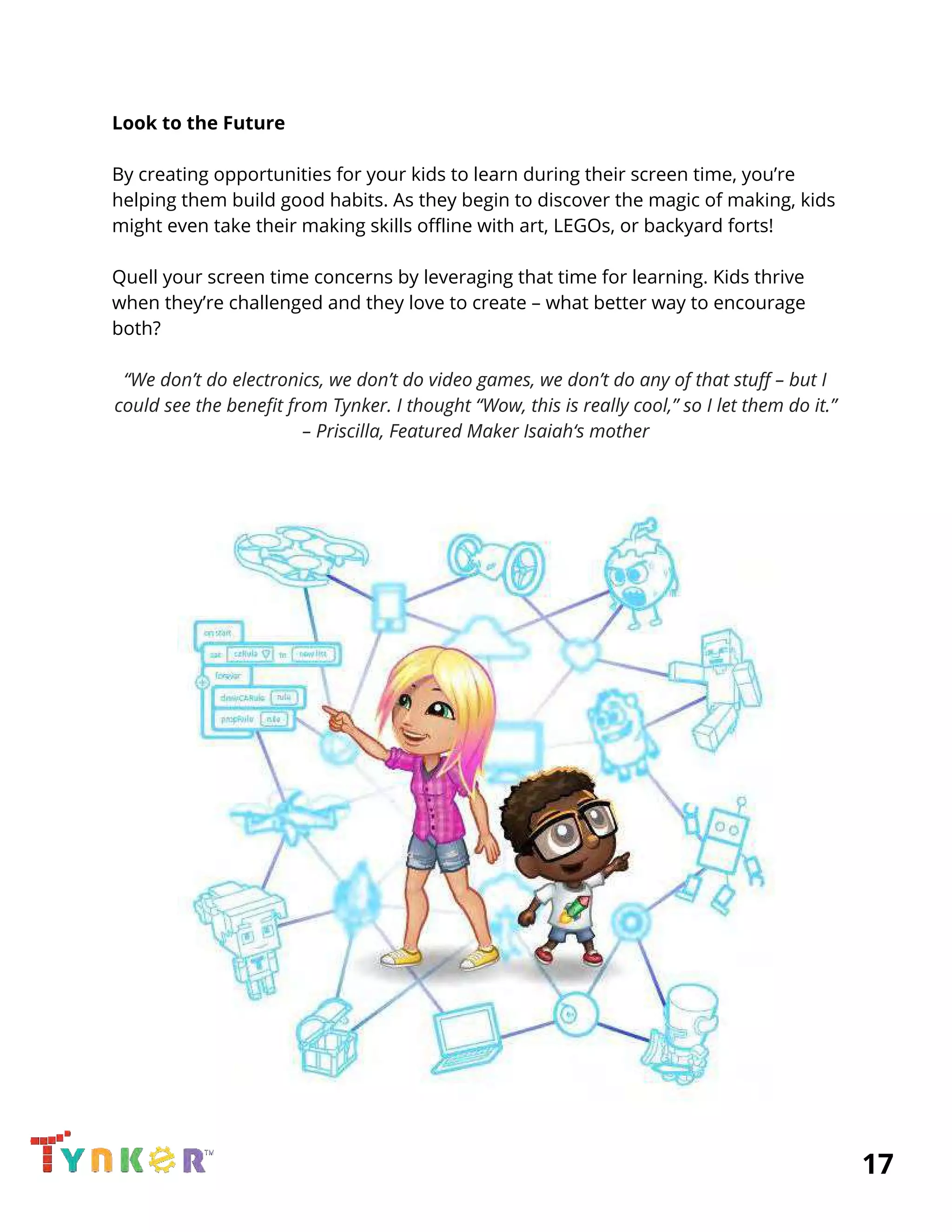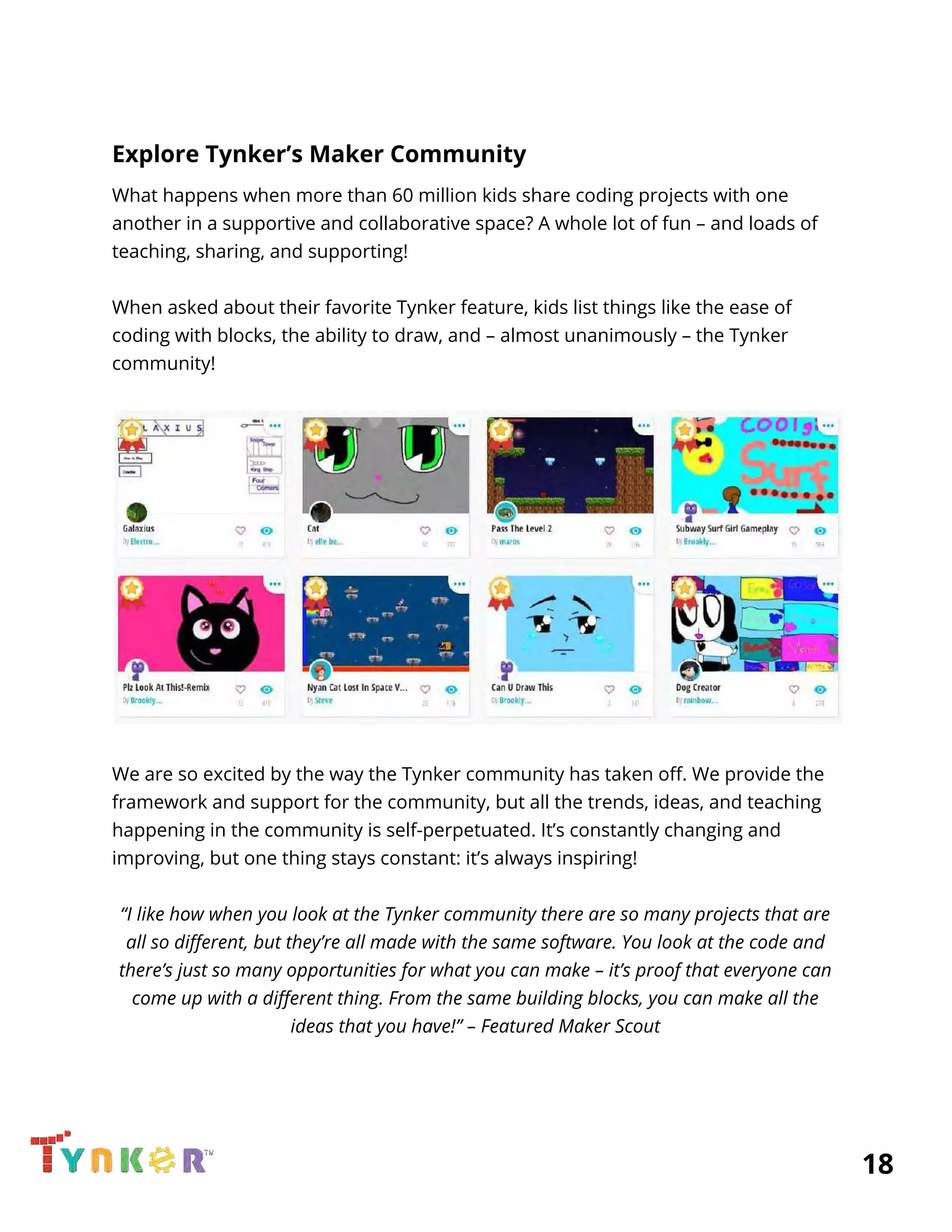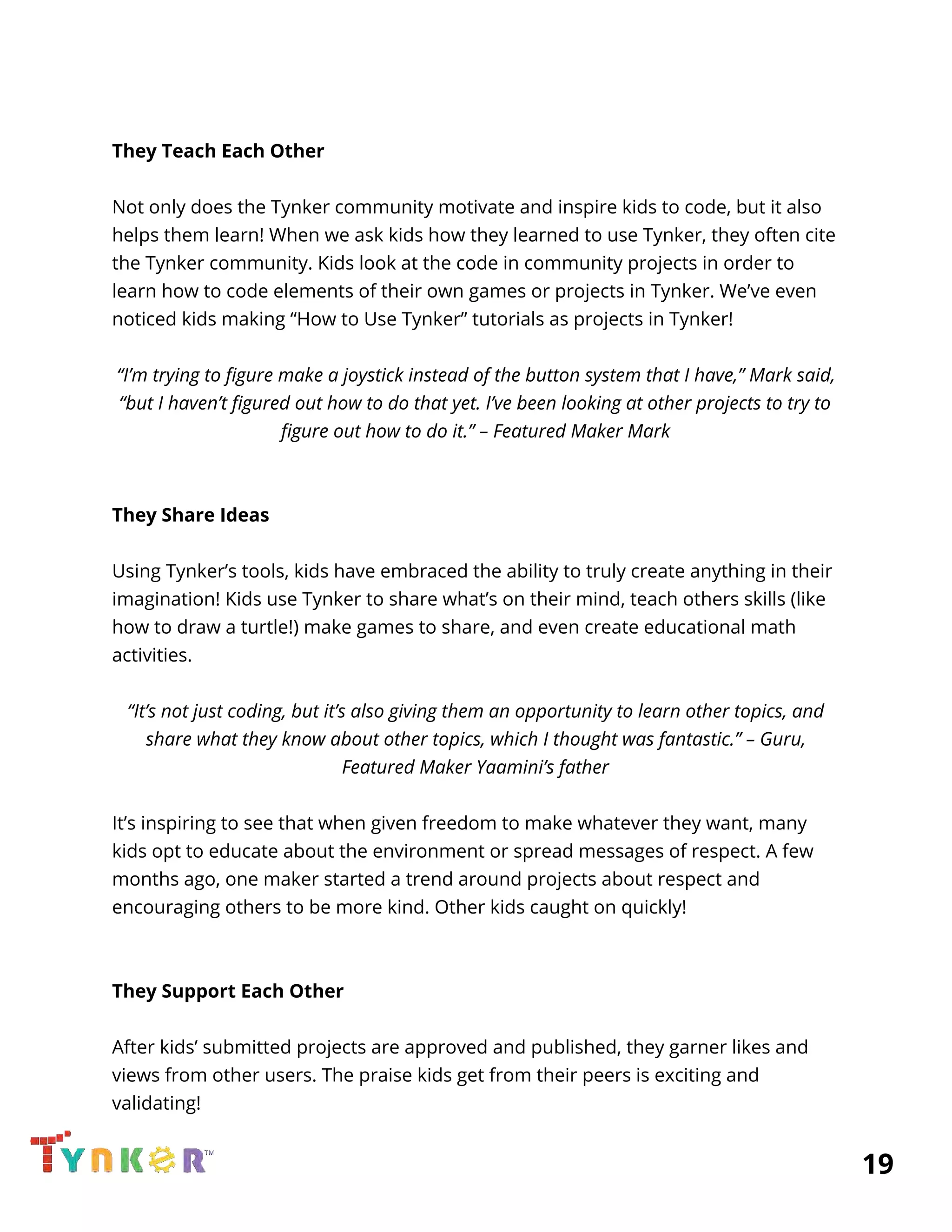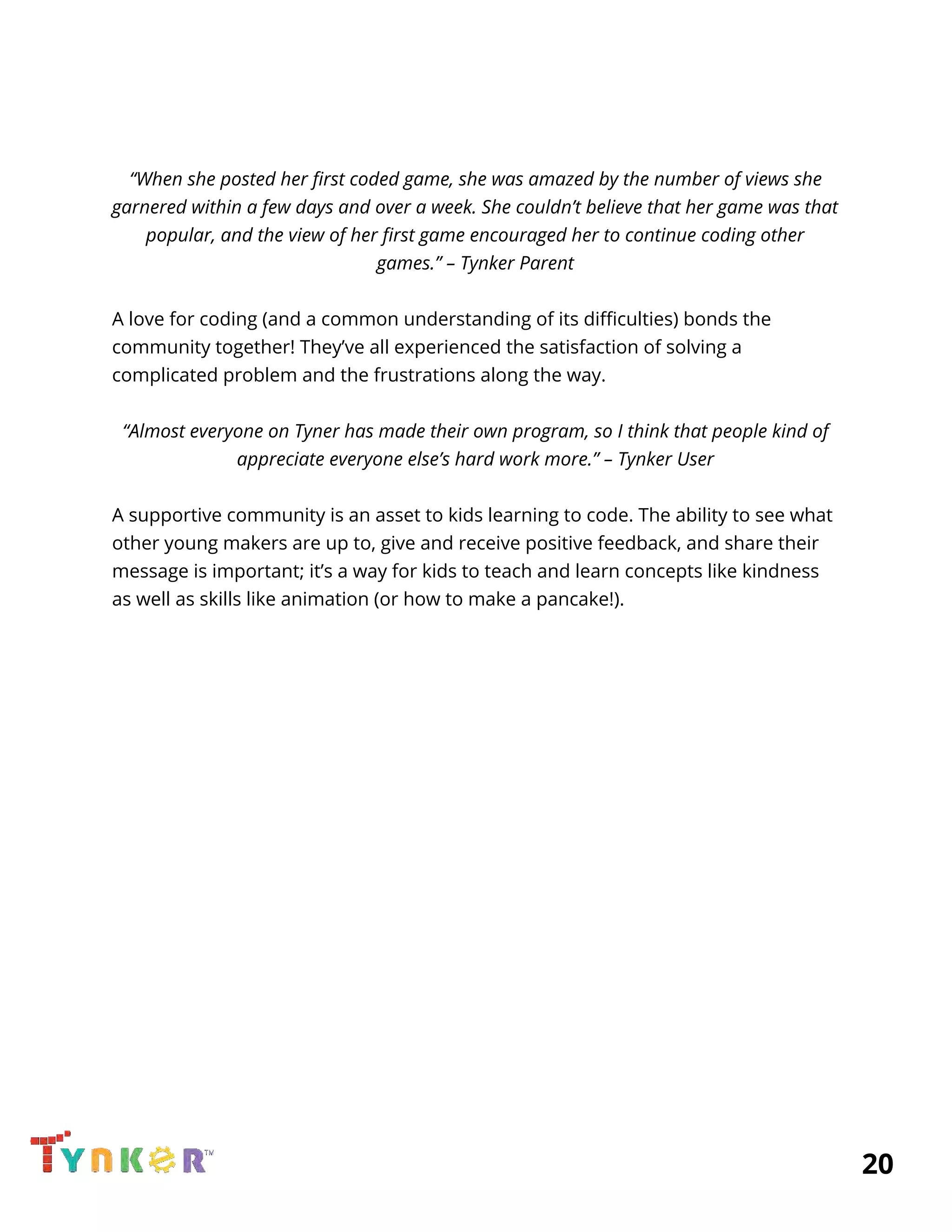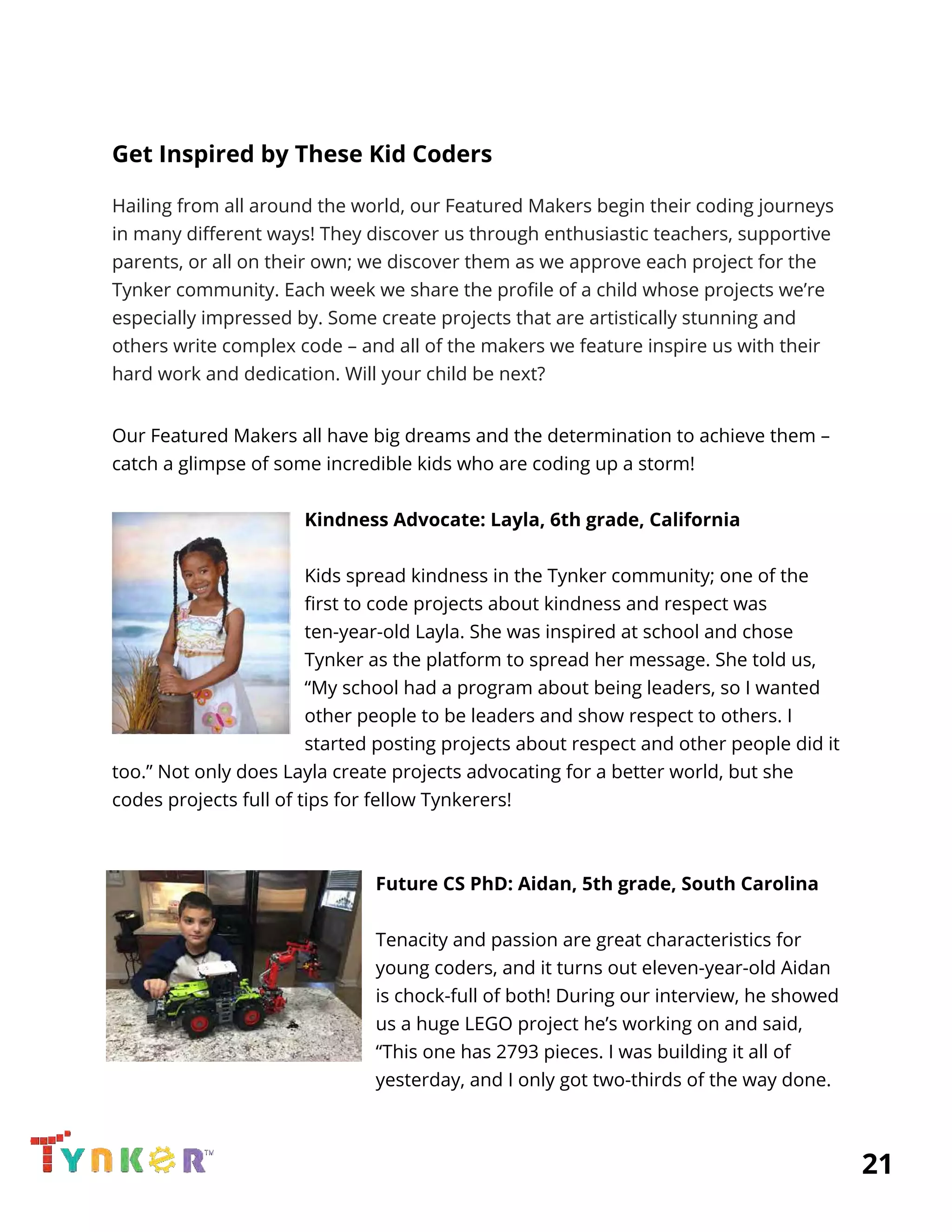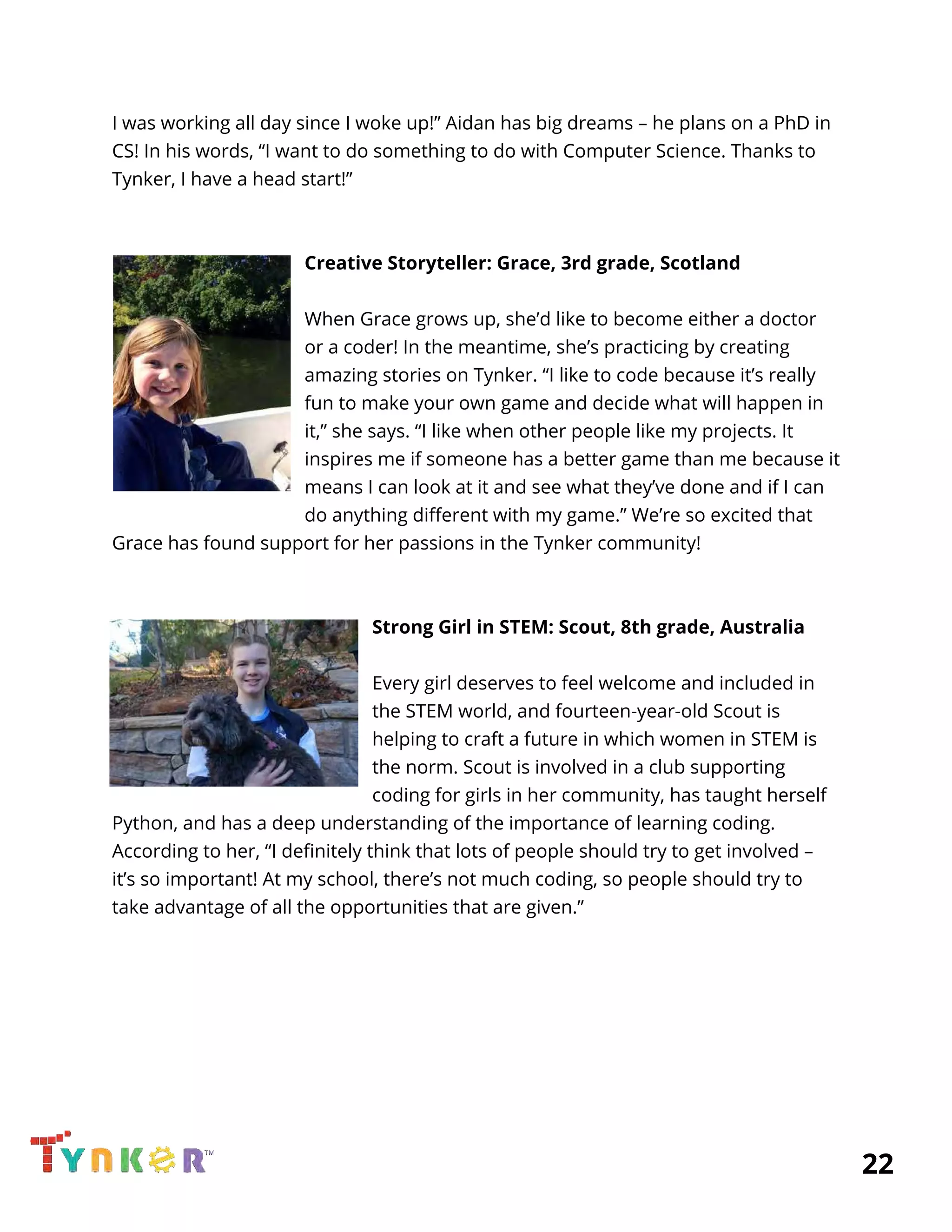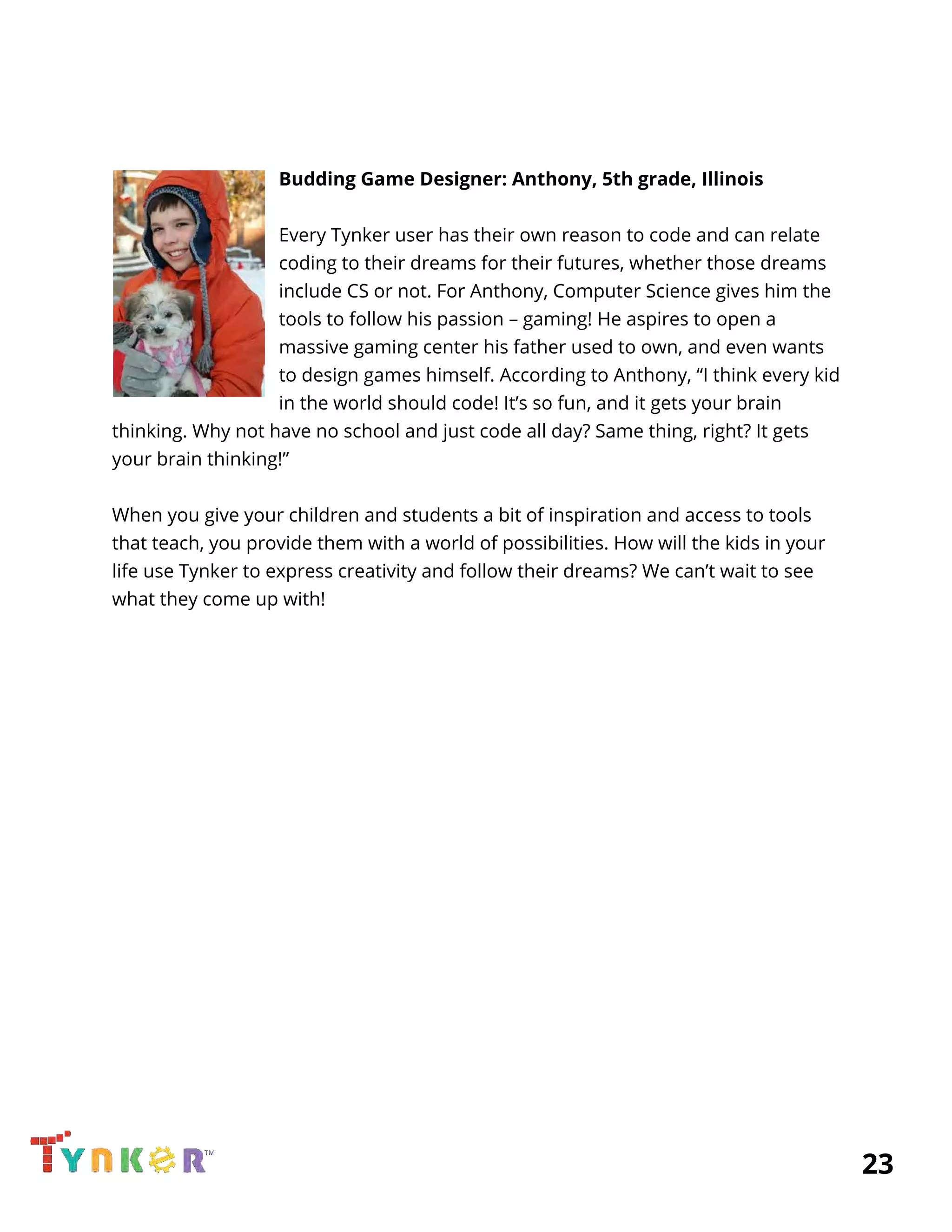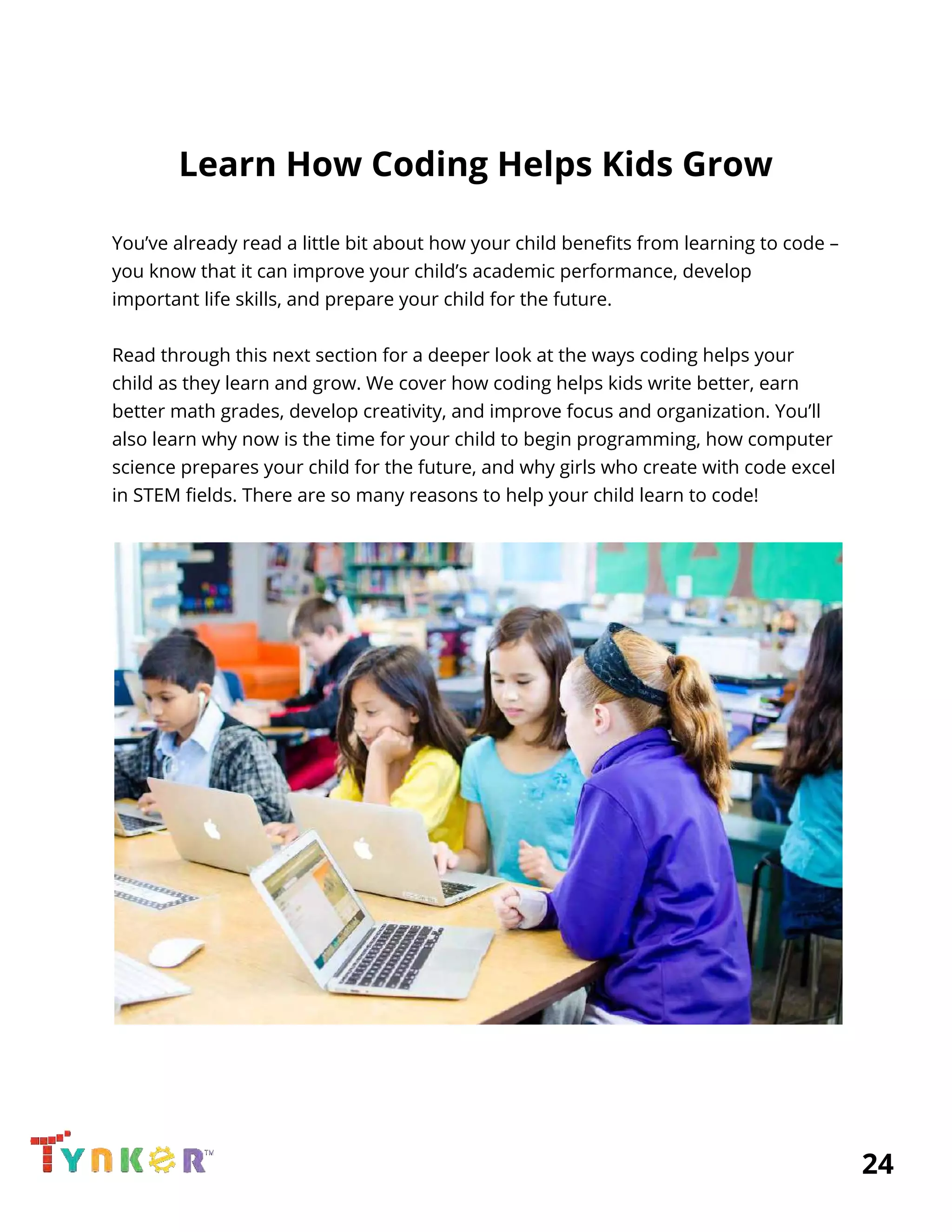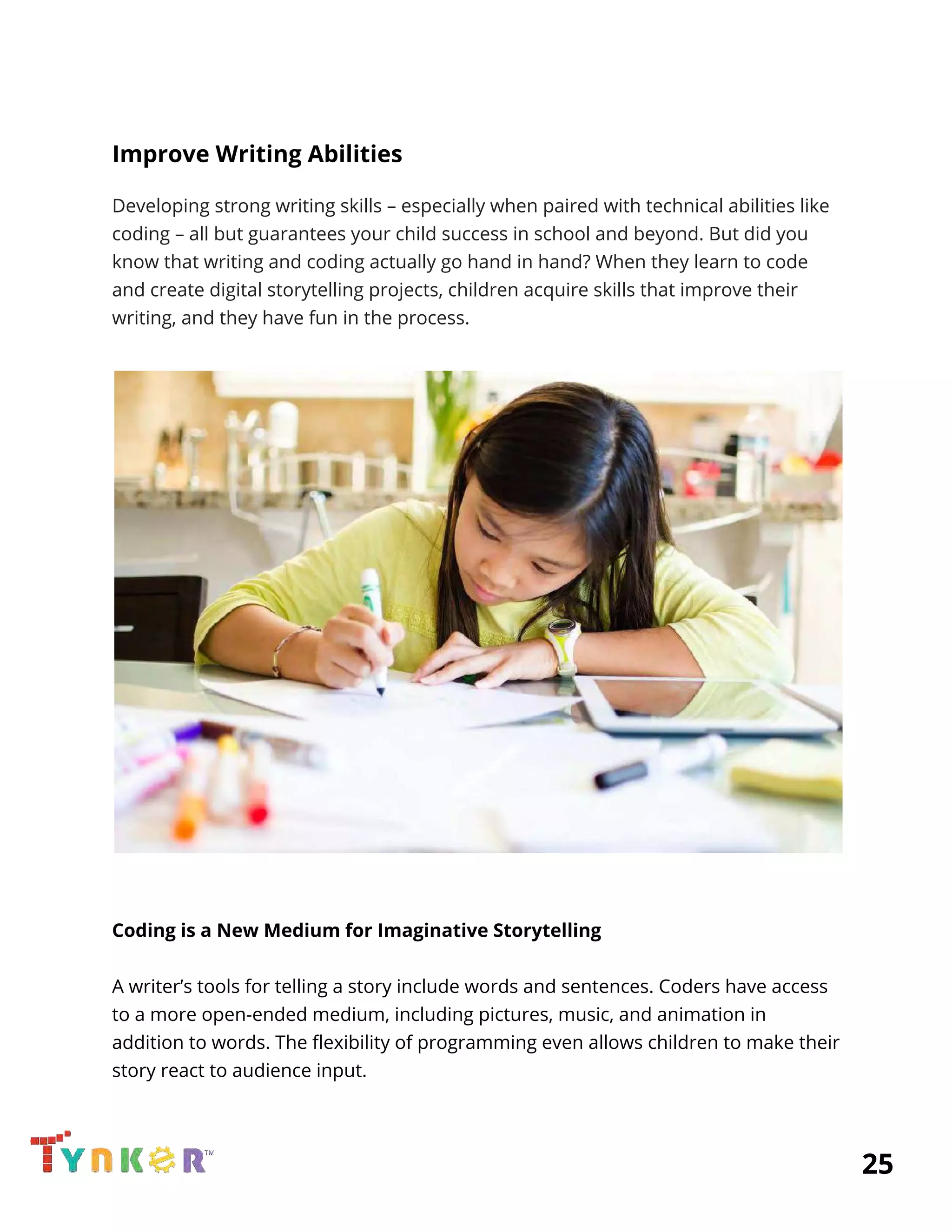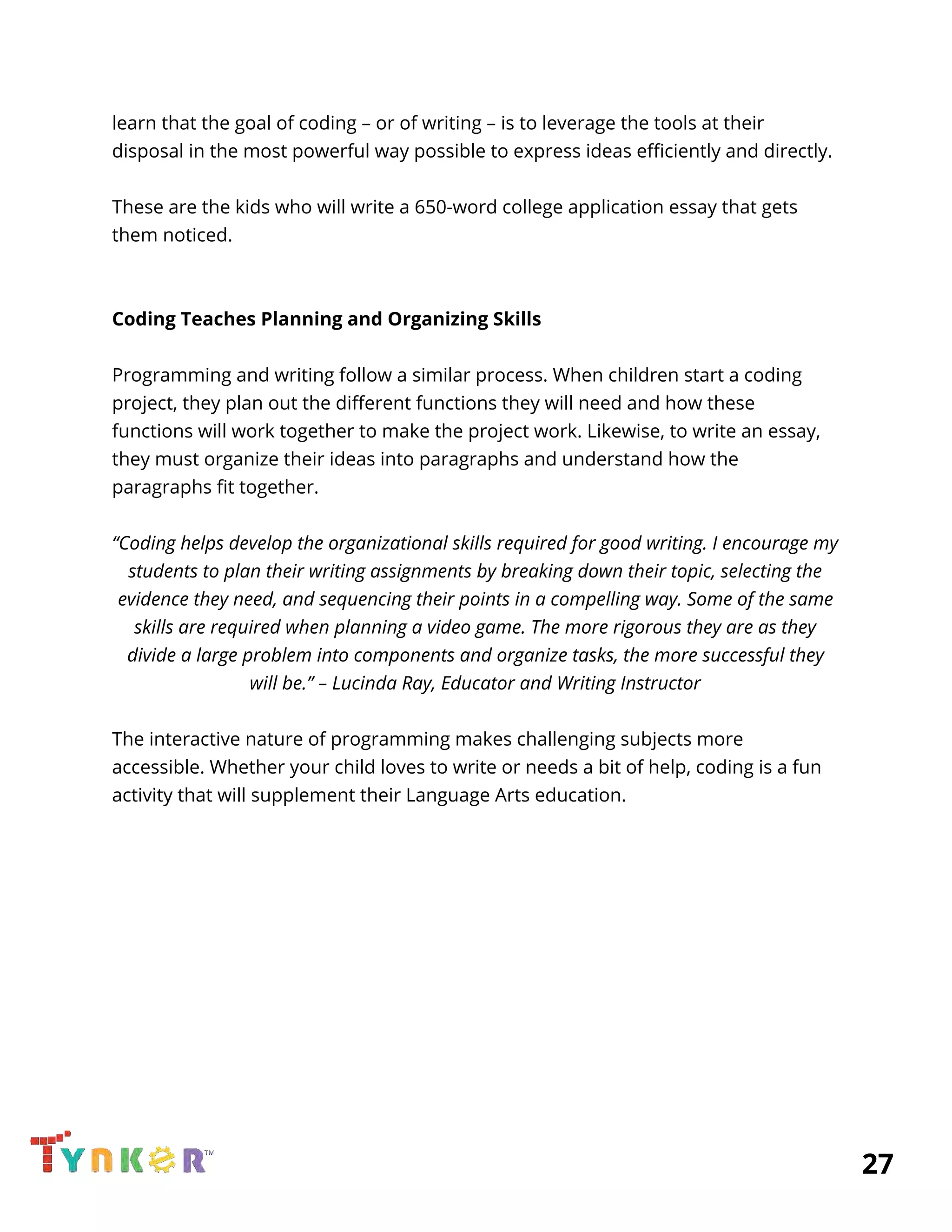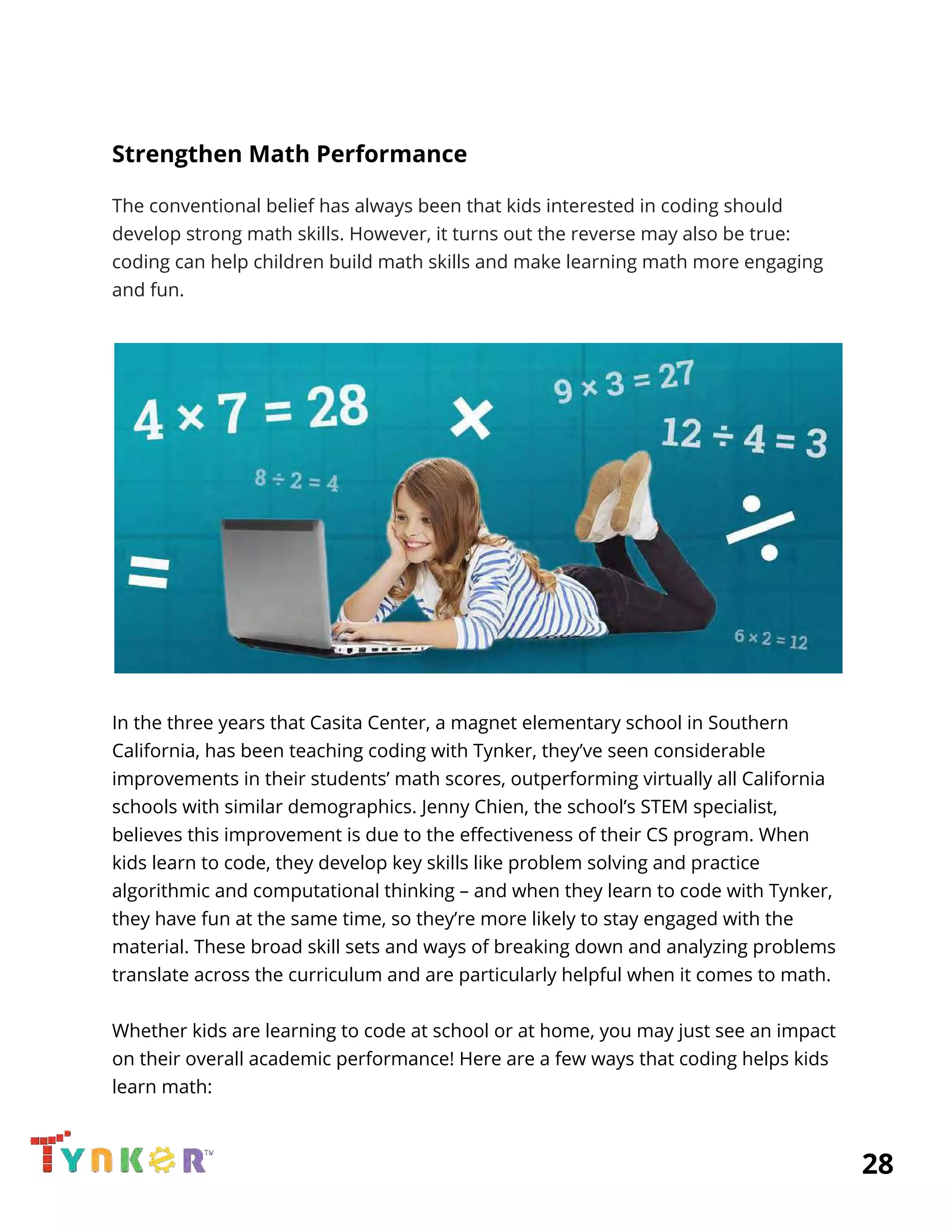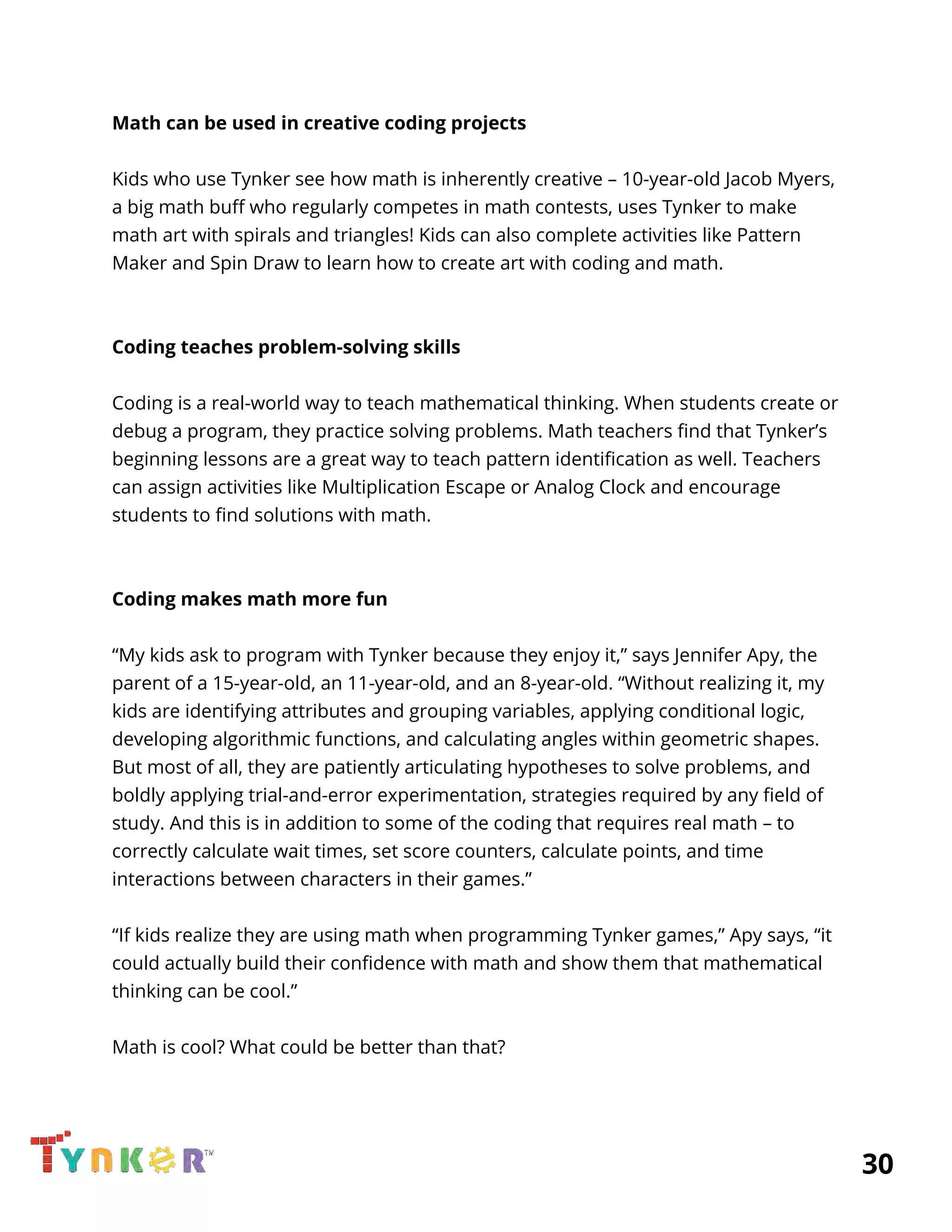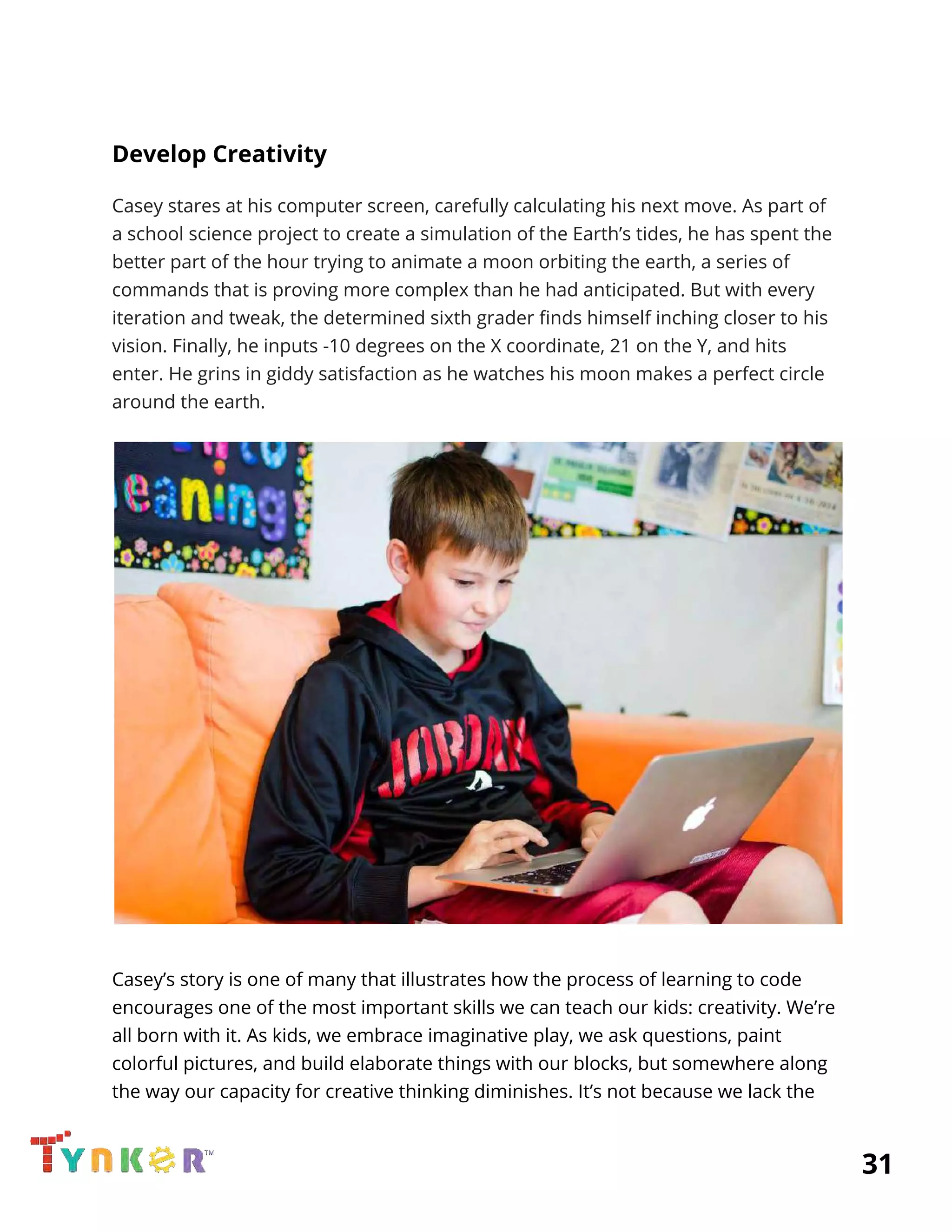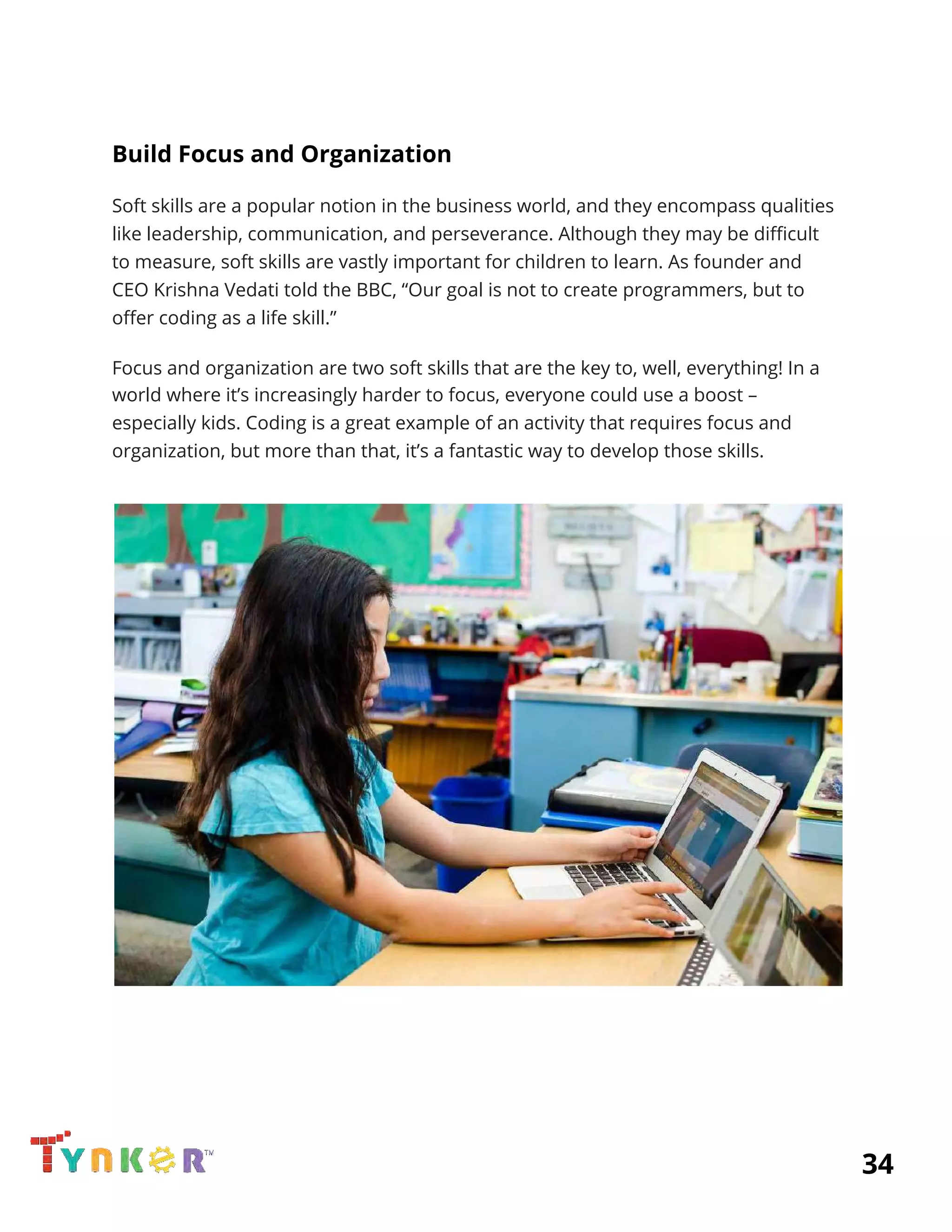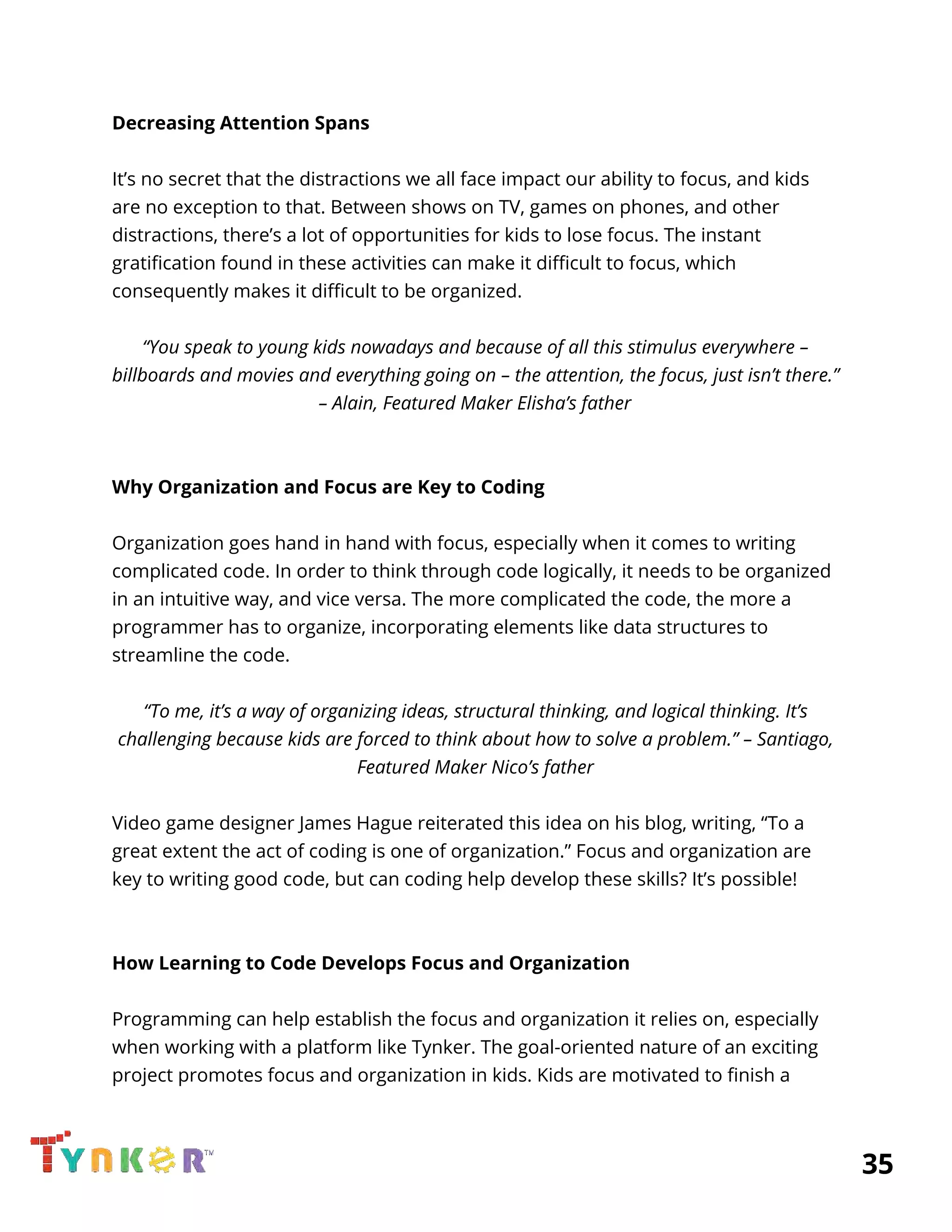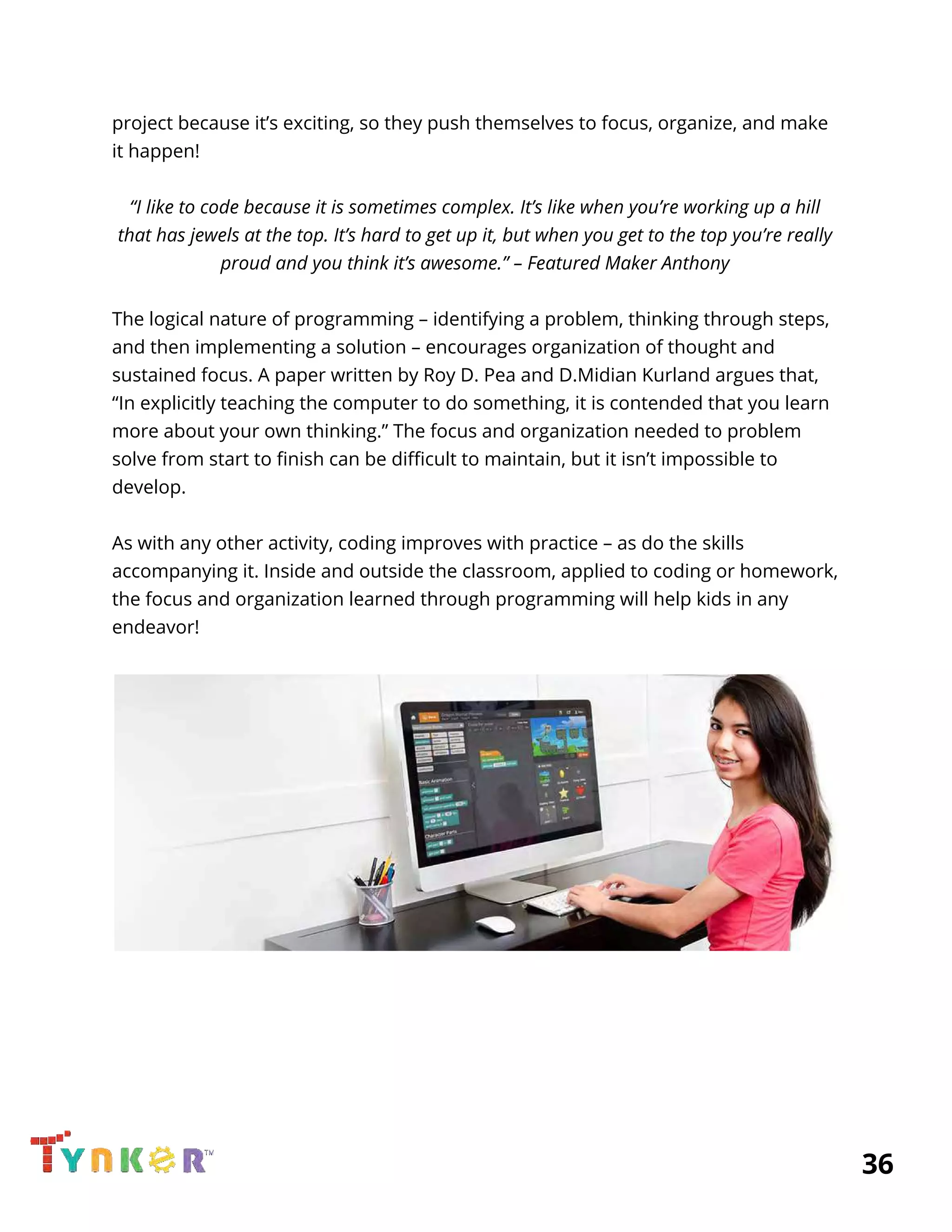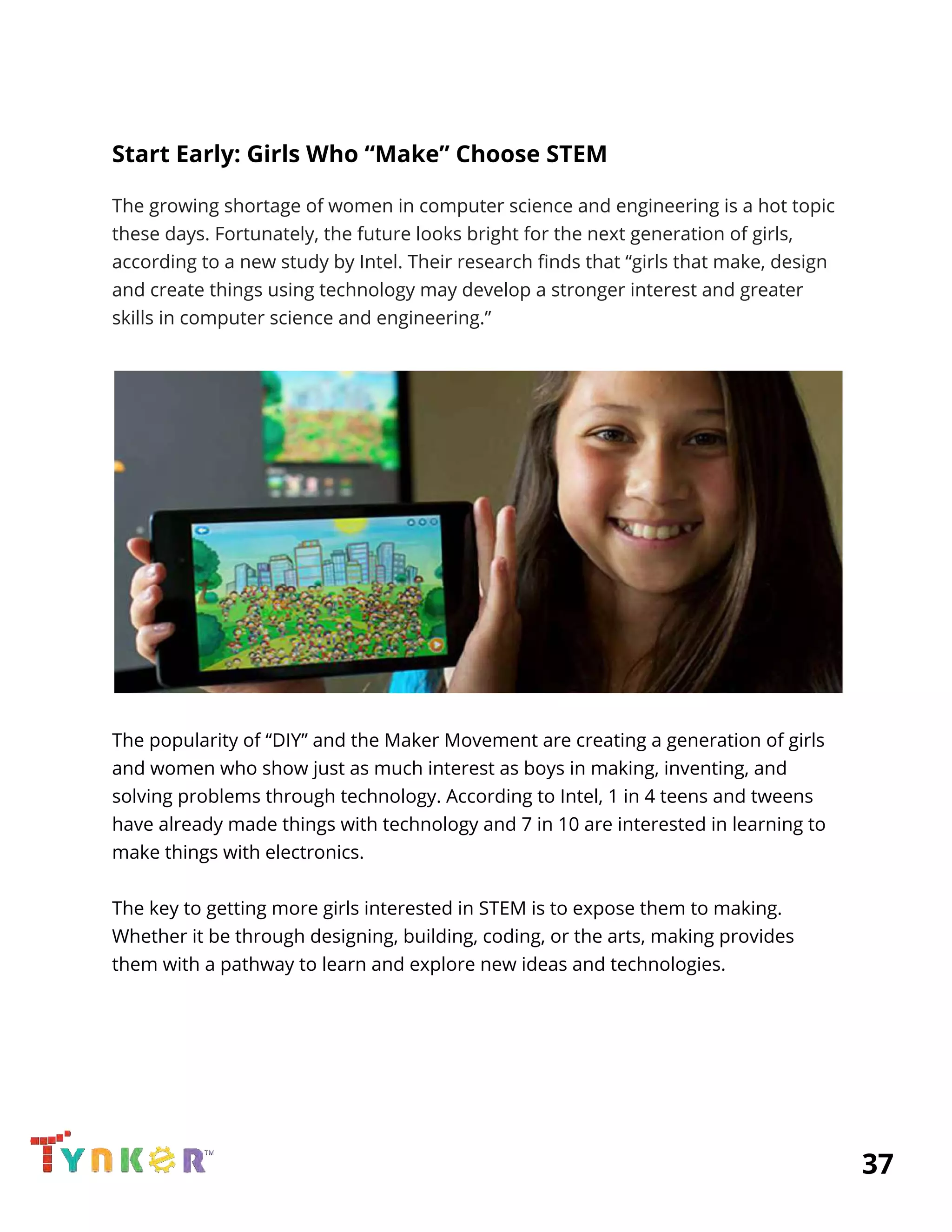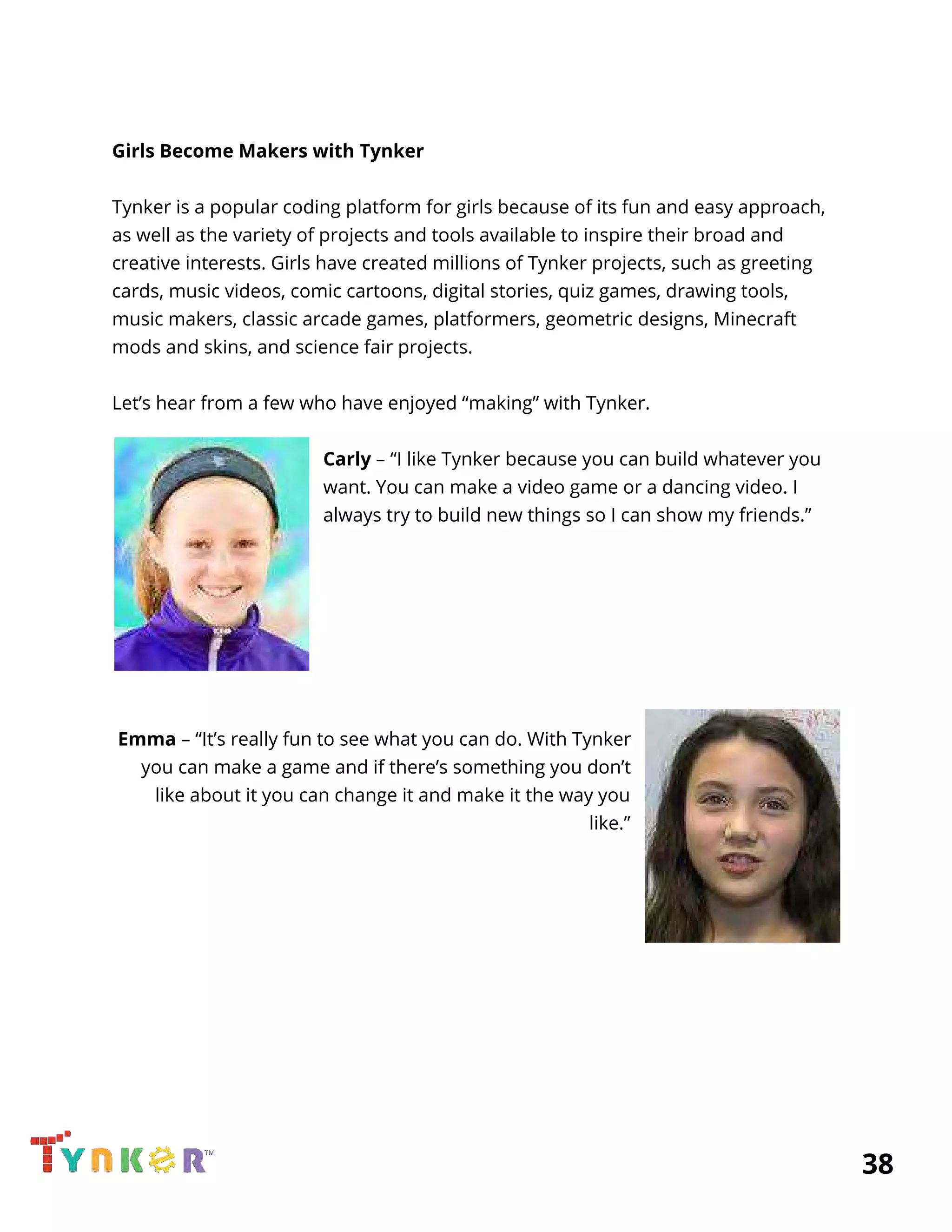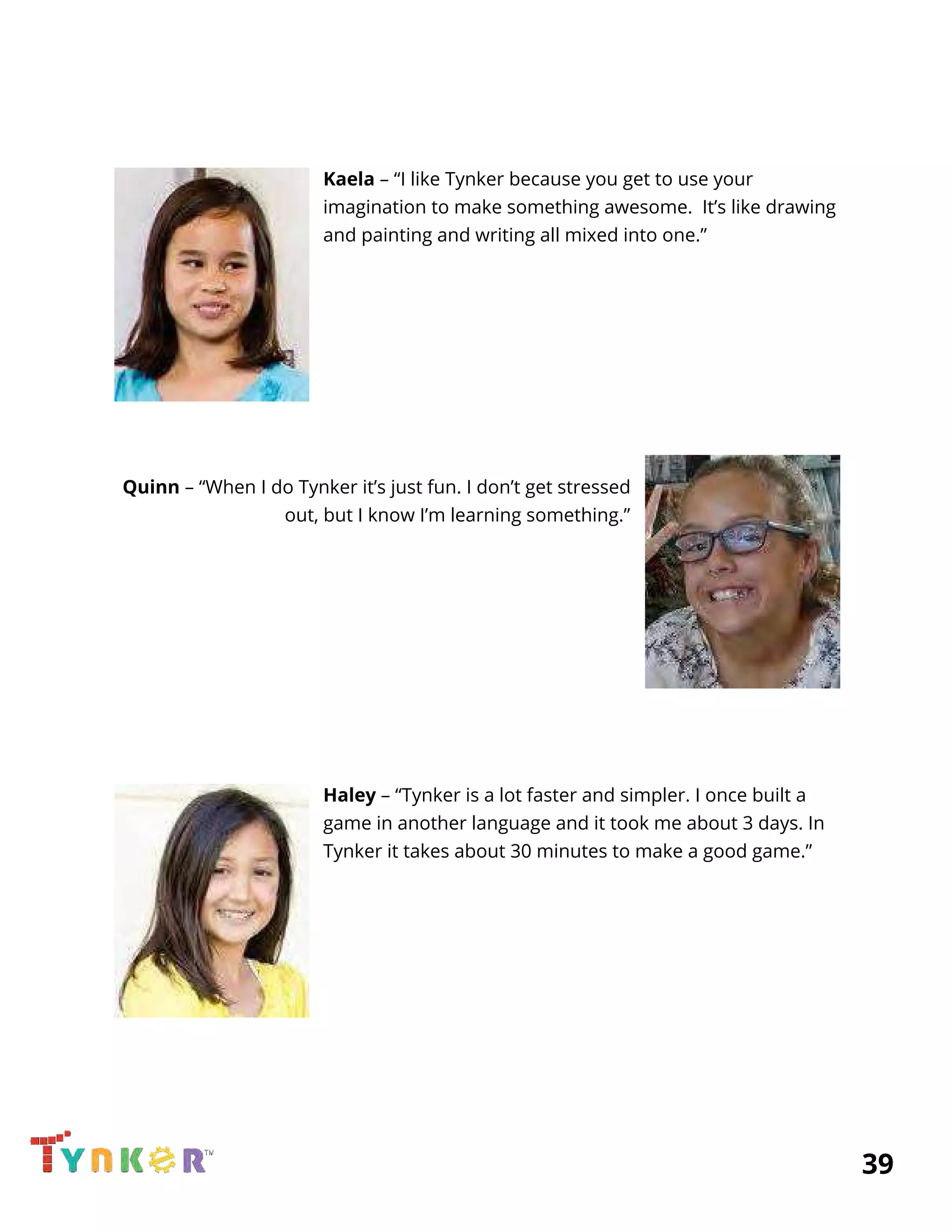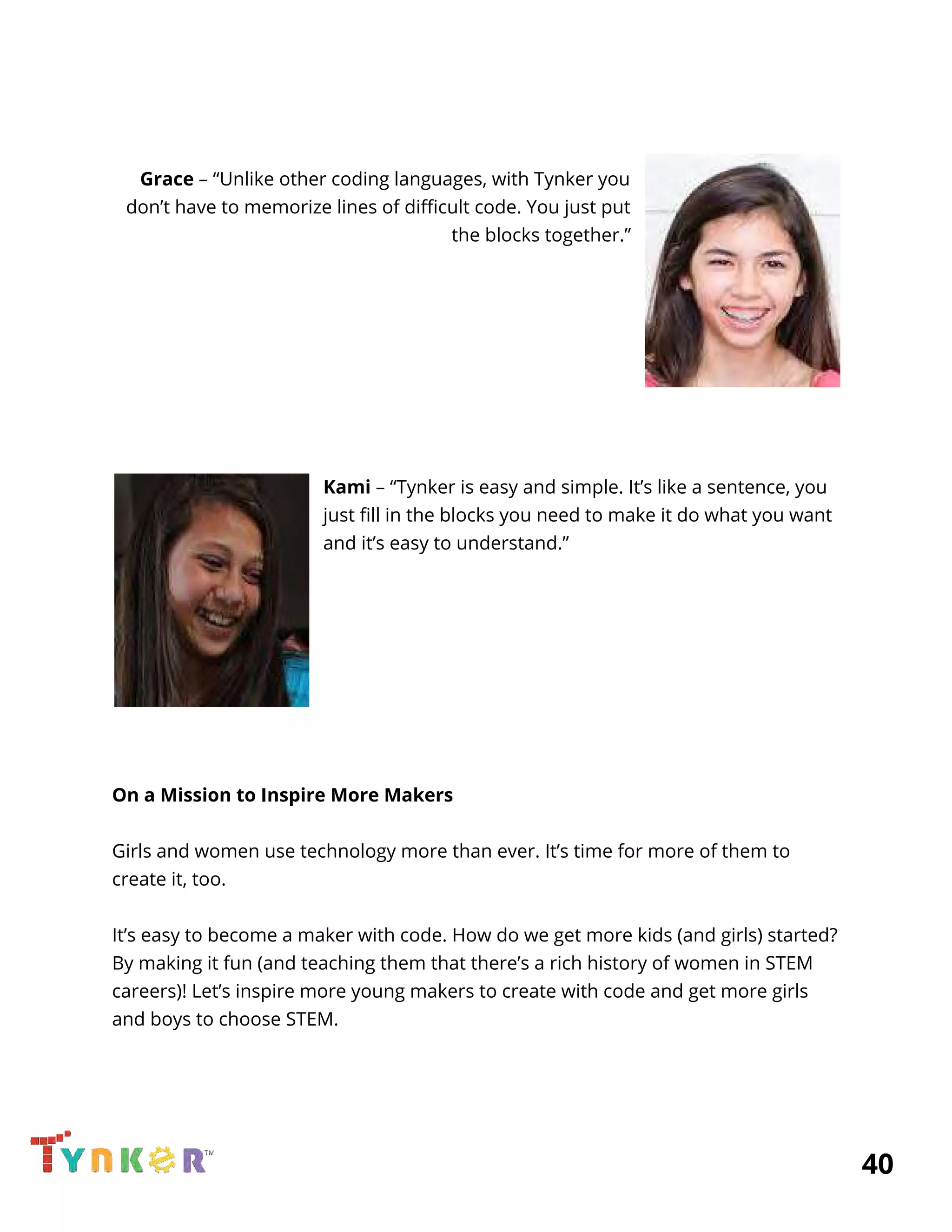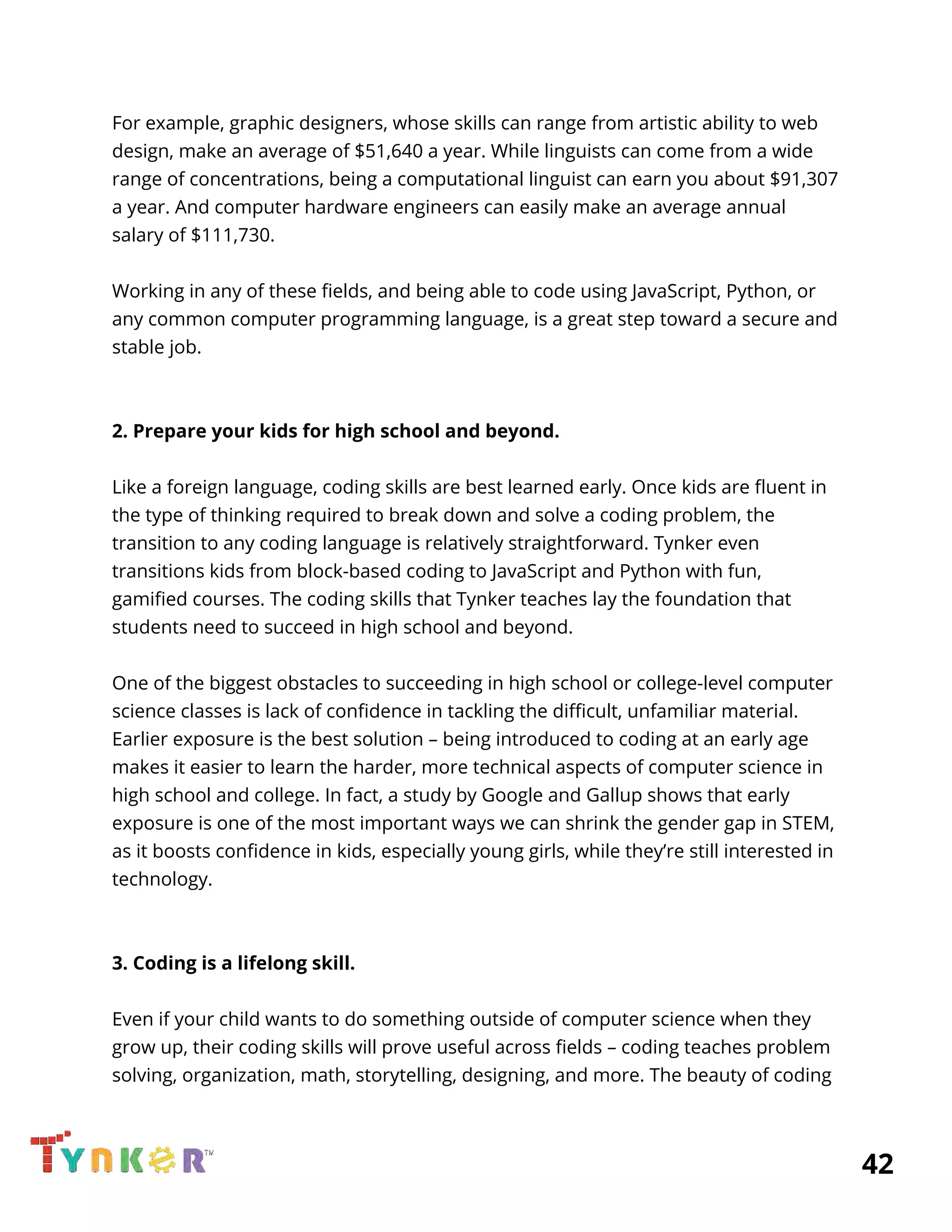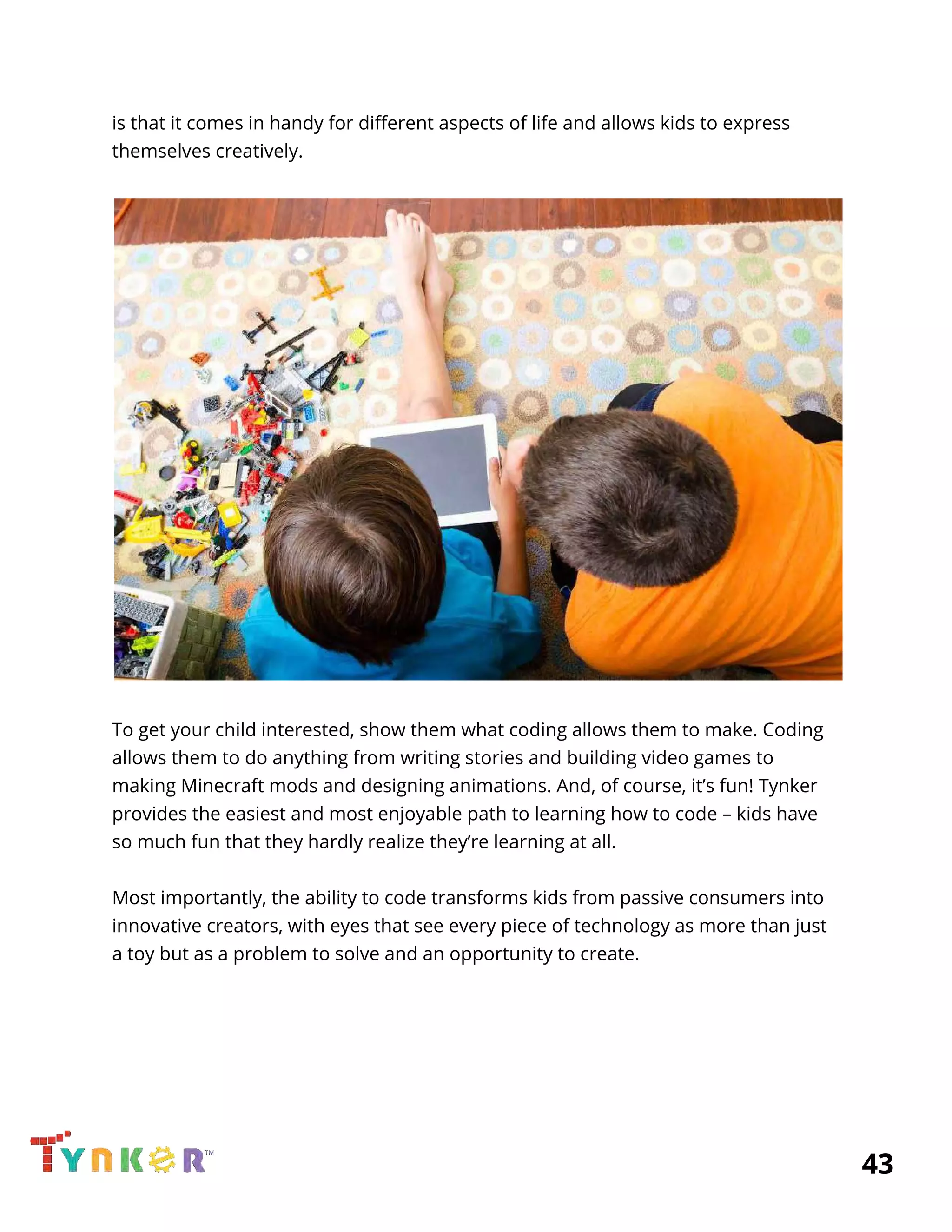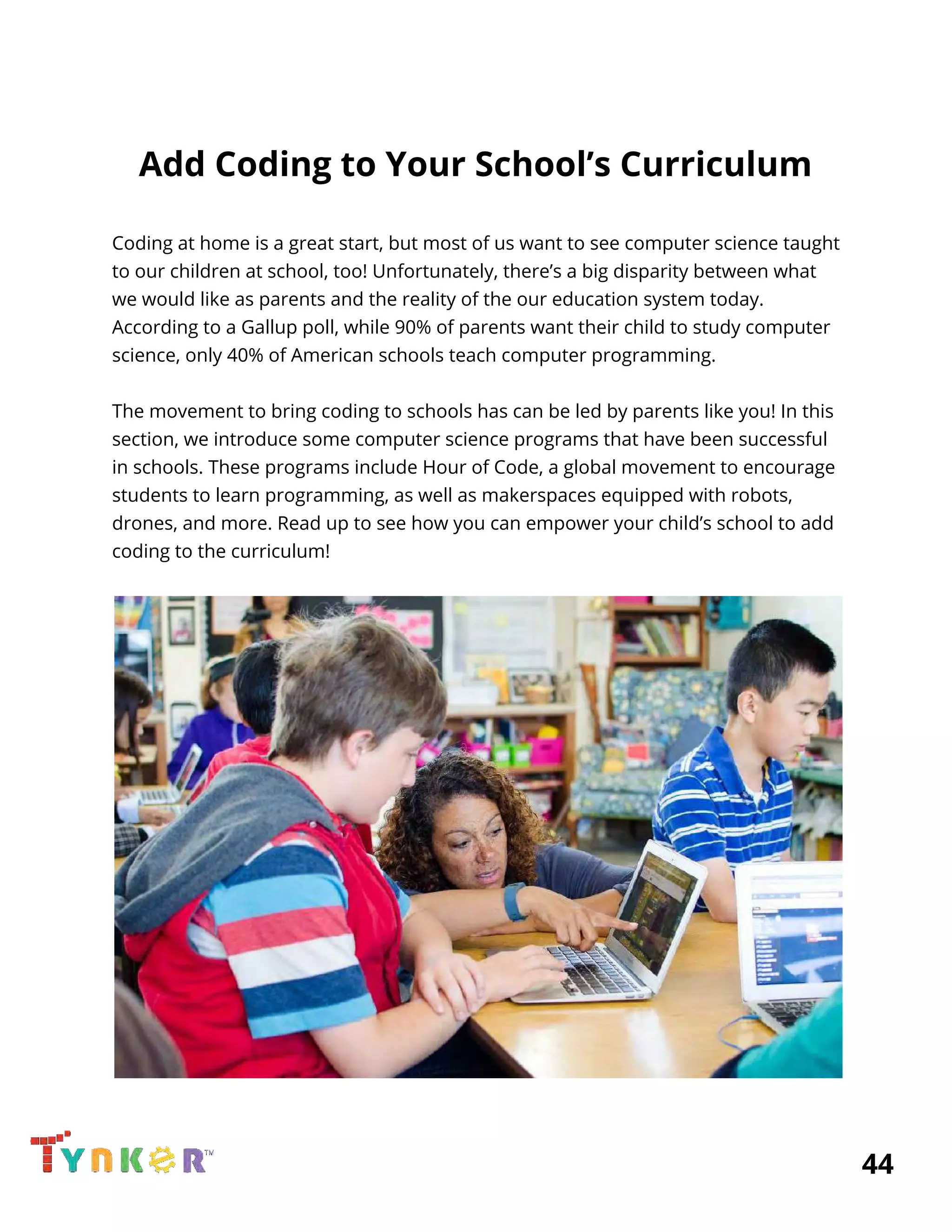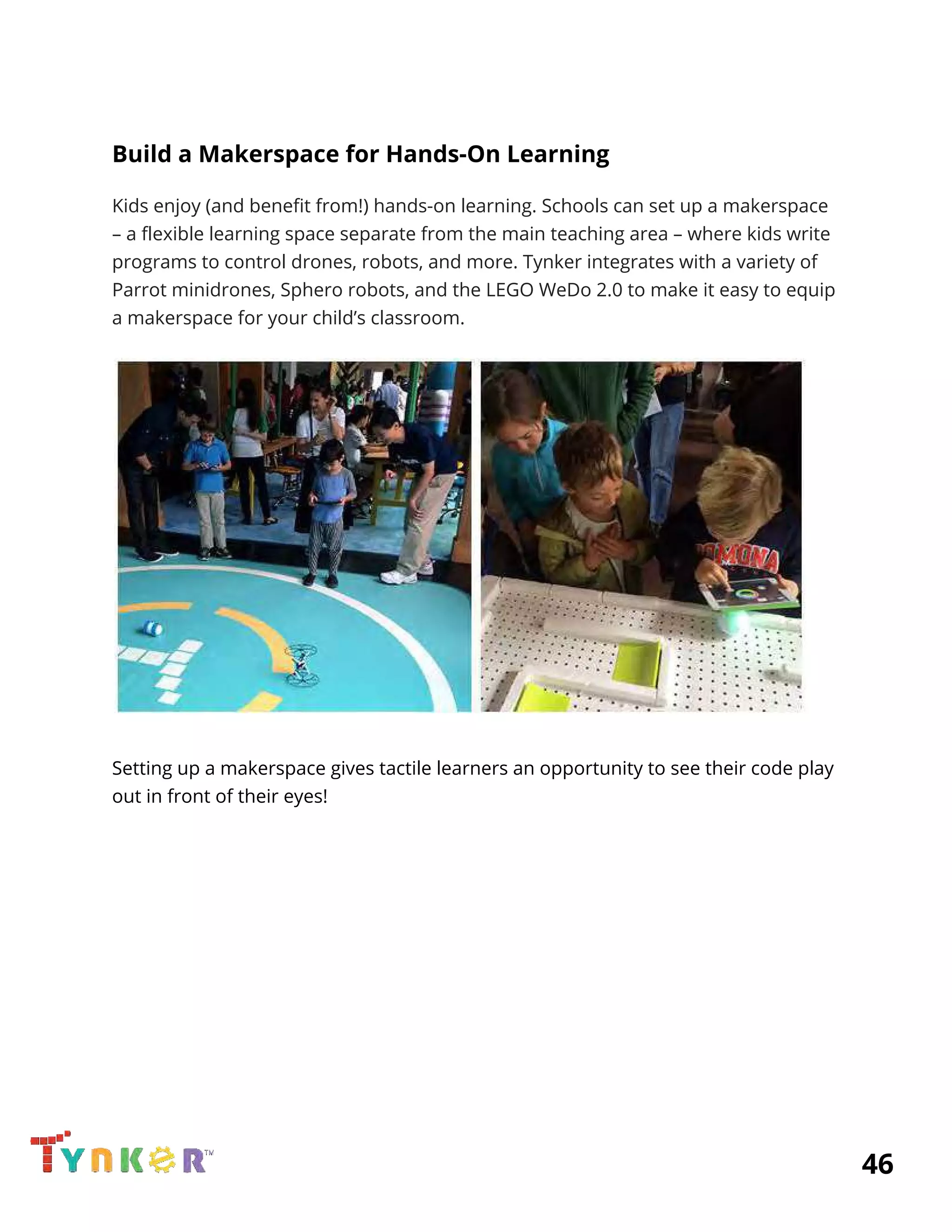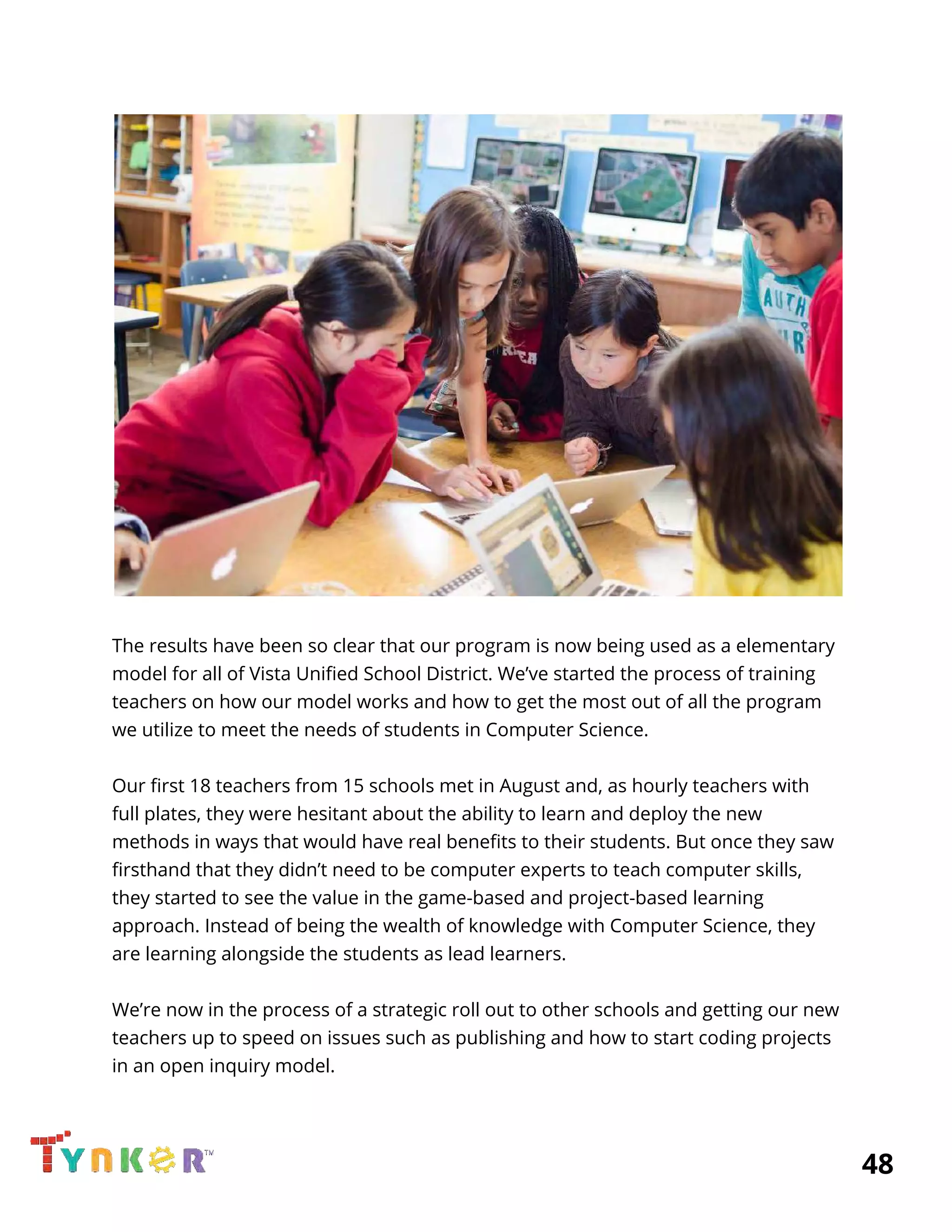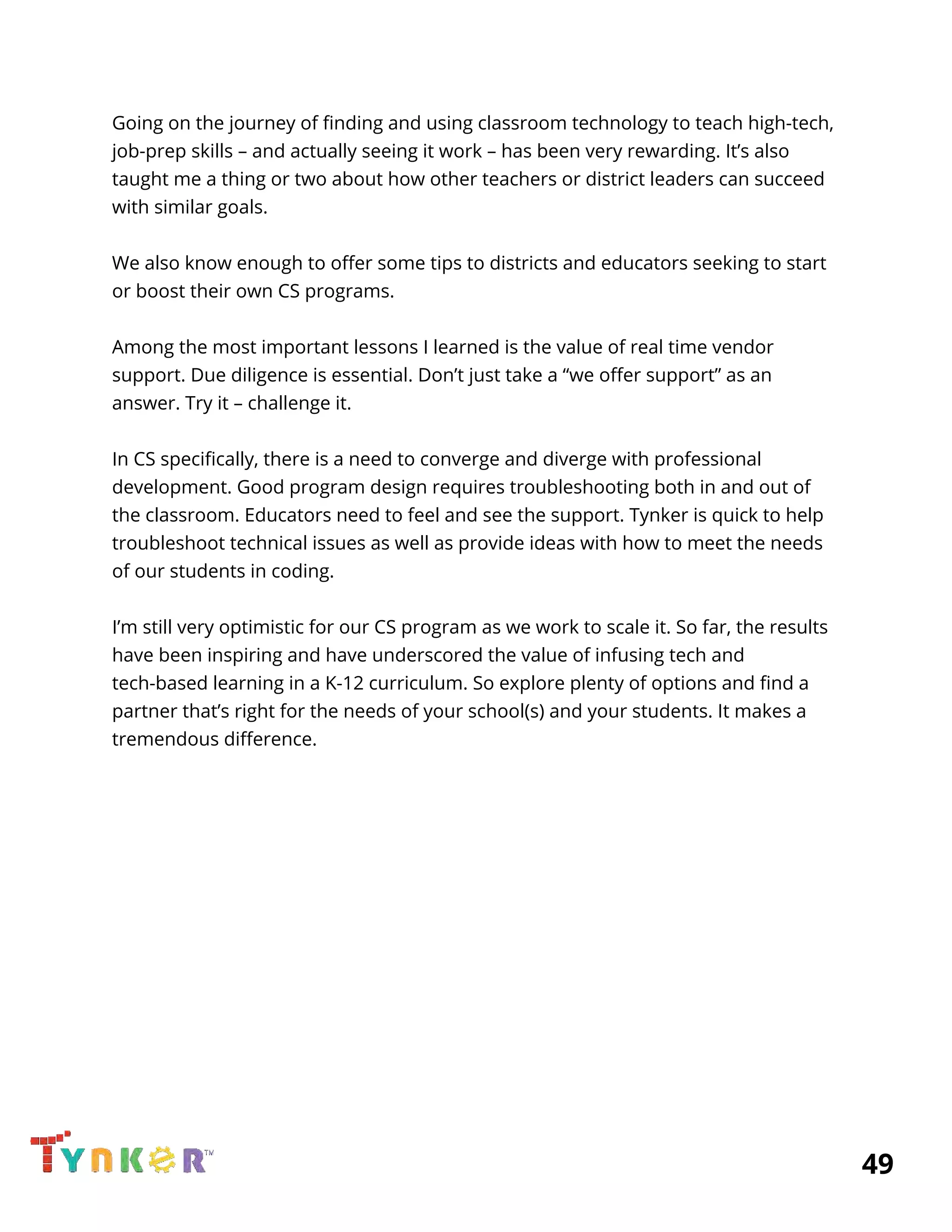This document provides an overview of coding and Tynker's coding education platform. It discusses what coding is, the benefits of children learning to code such as improved academic performance and life skills, and how coding prepares children for the future. It describes Tynker's game-based and visual coding curriculum, its global community of users, and how to get started for free or through premium plans.

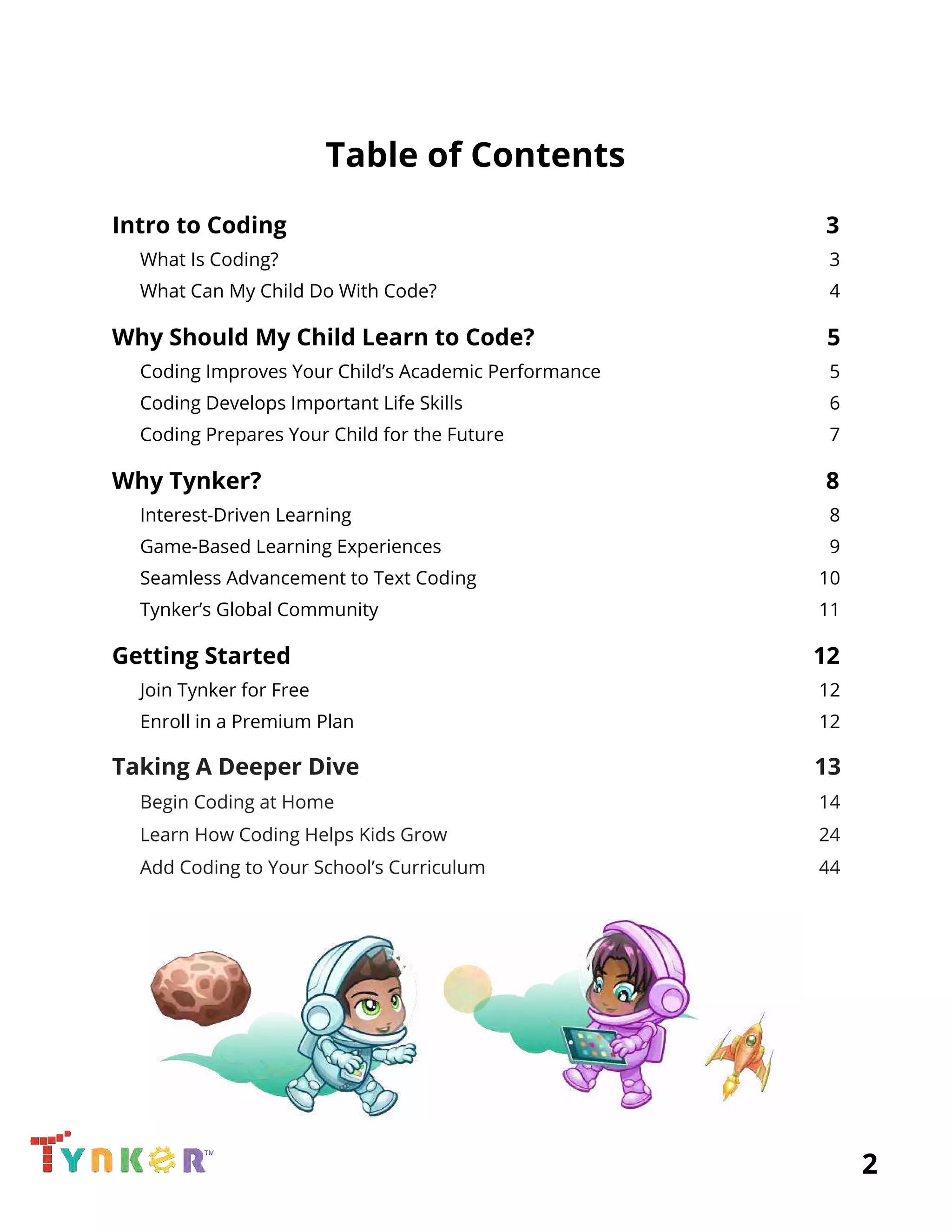
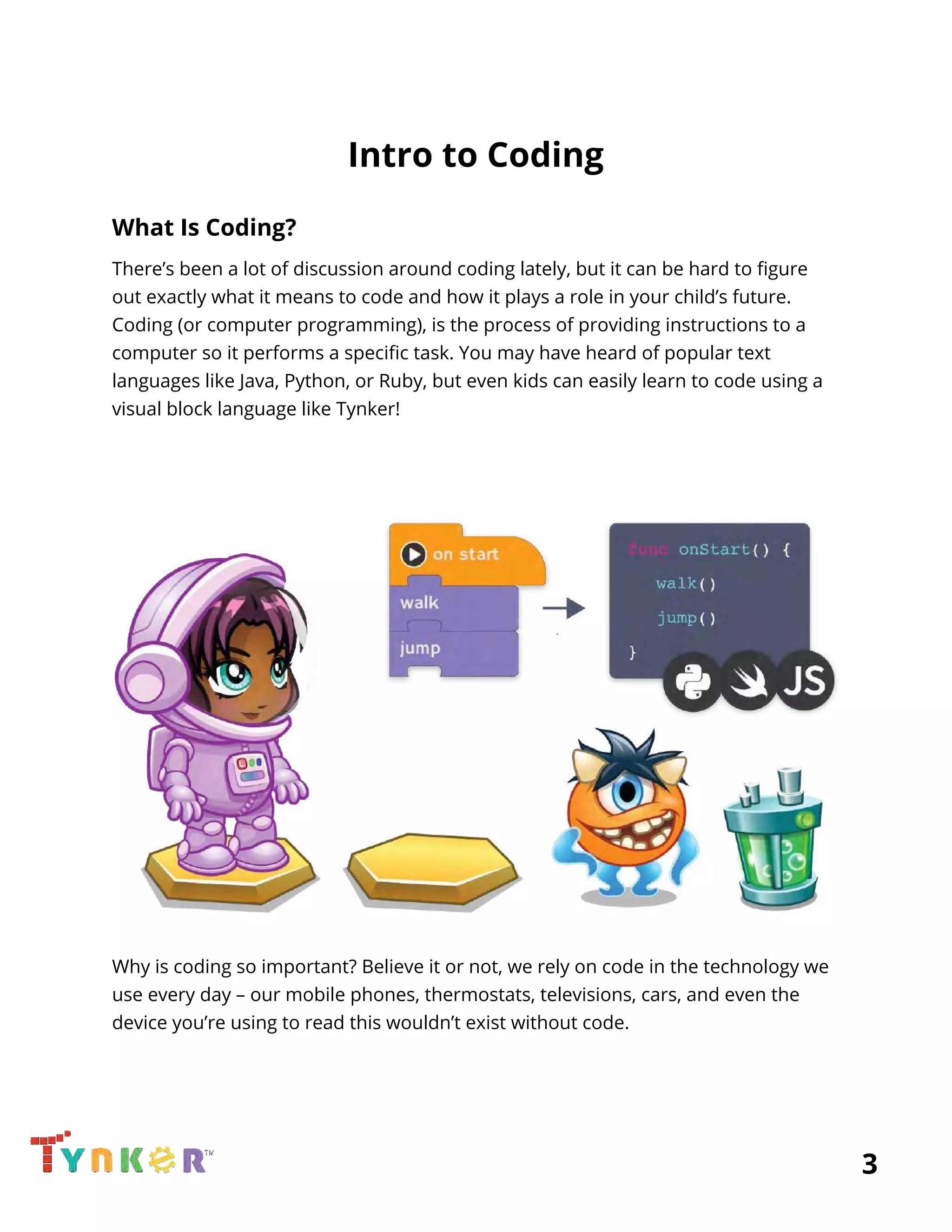
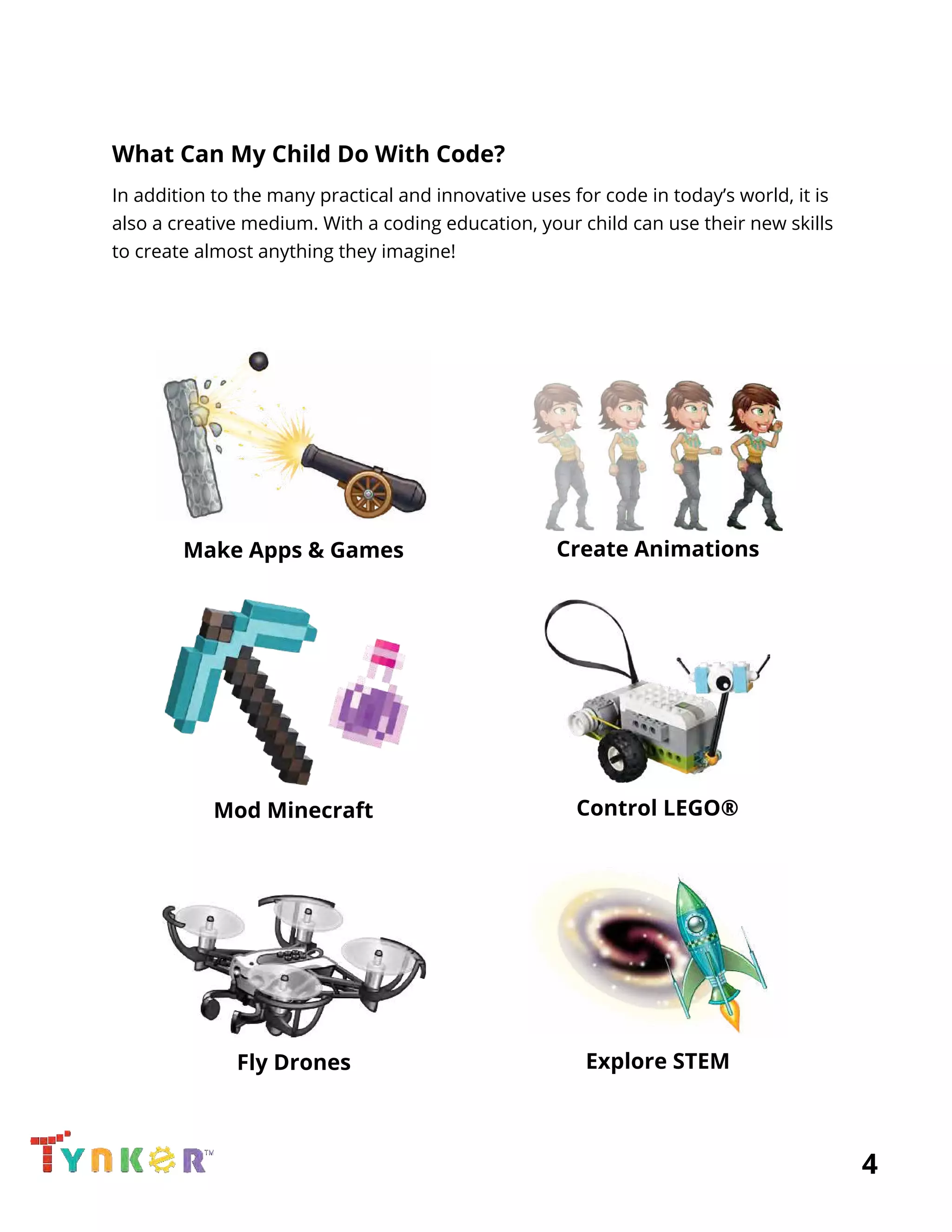
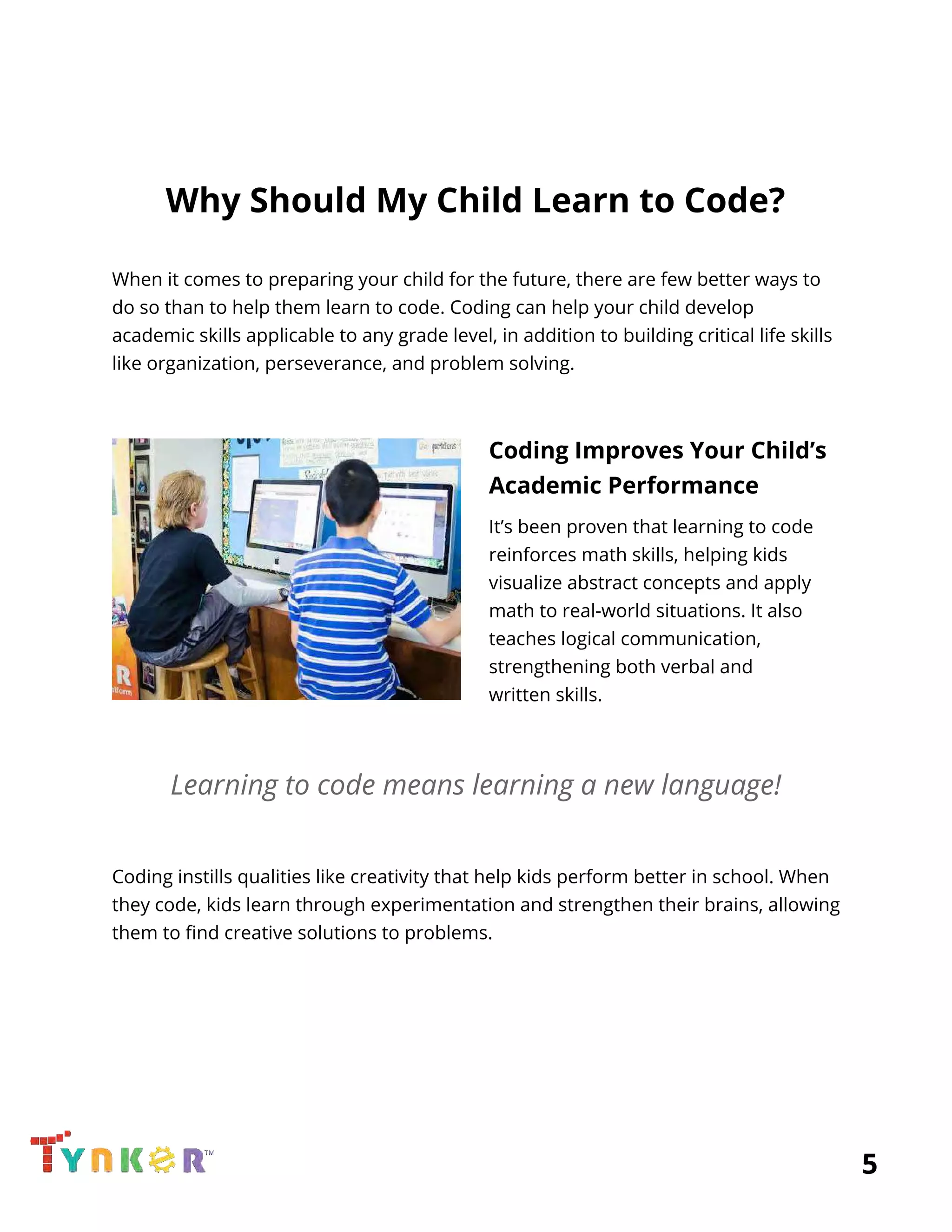
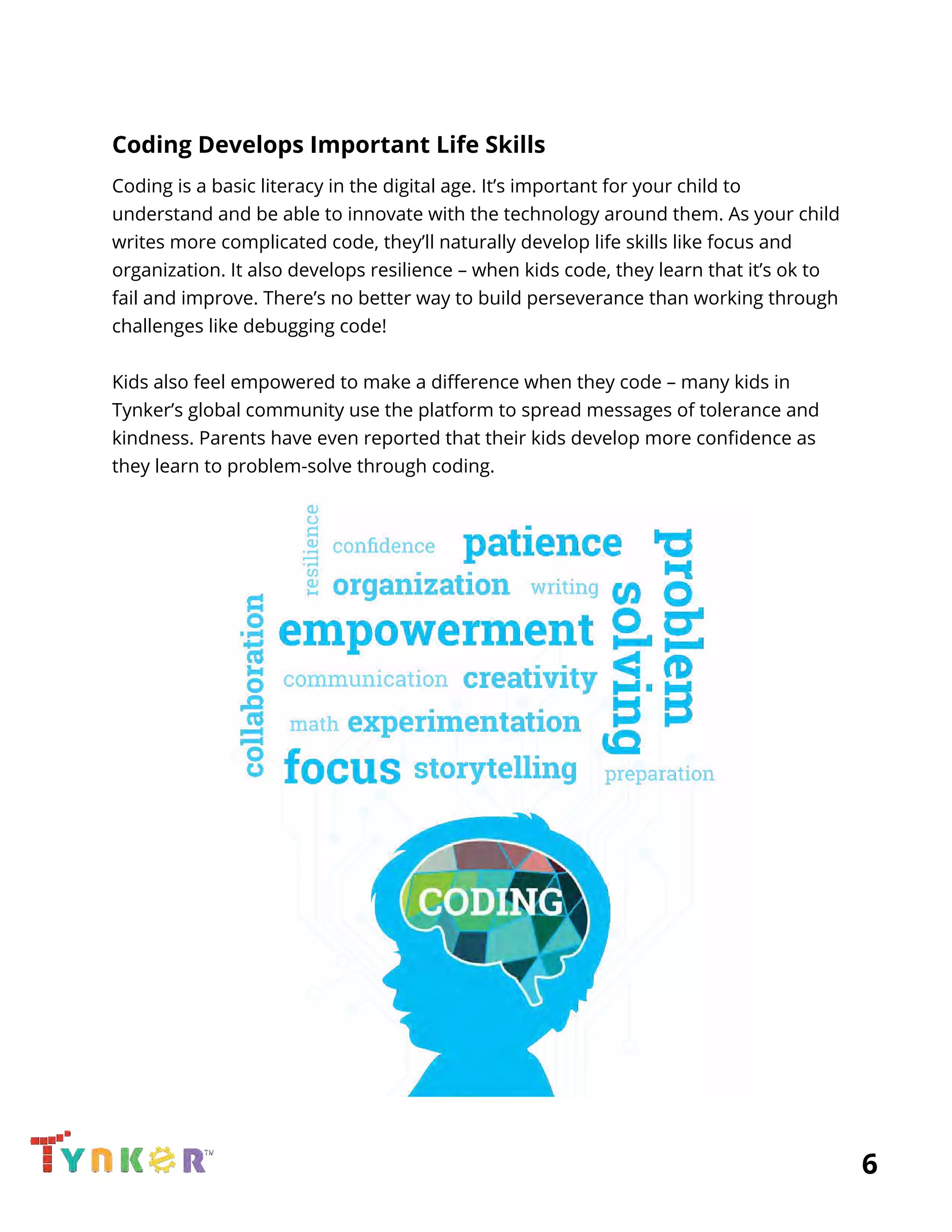
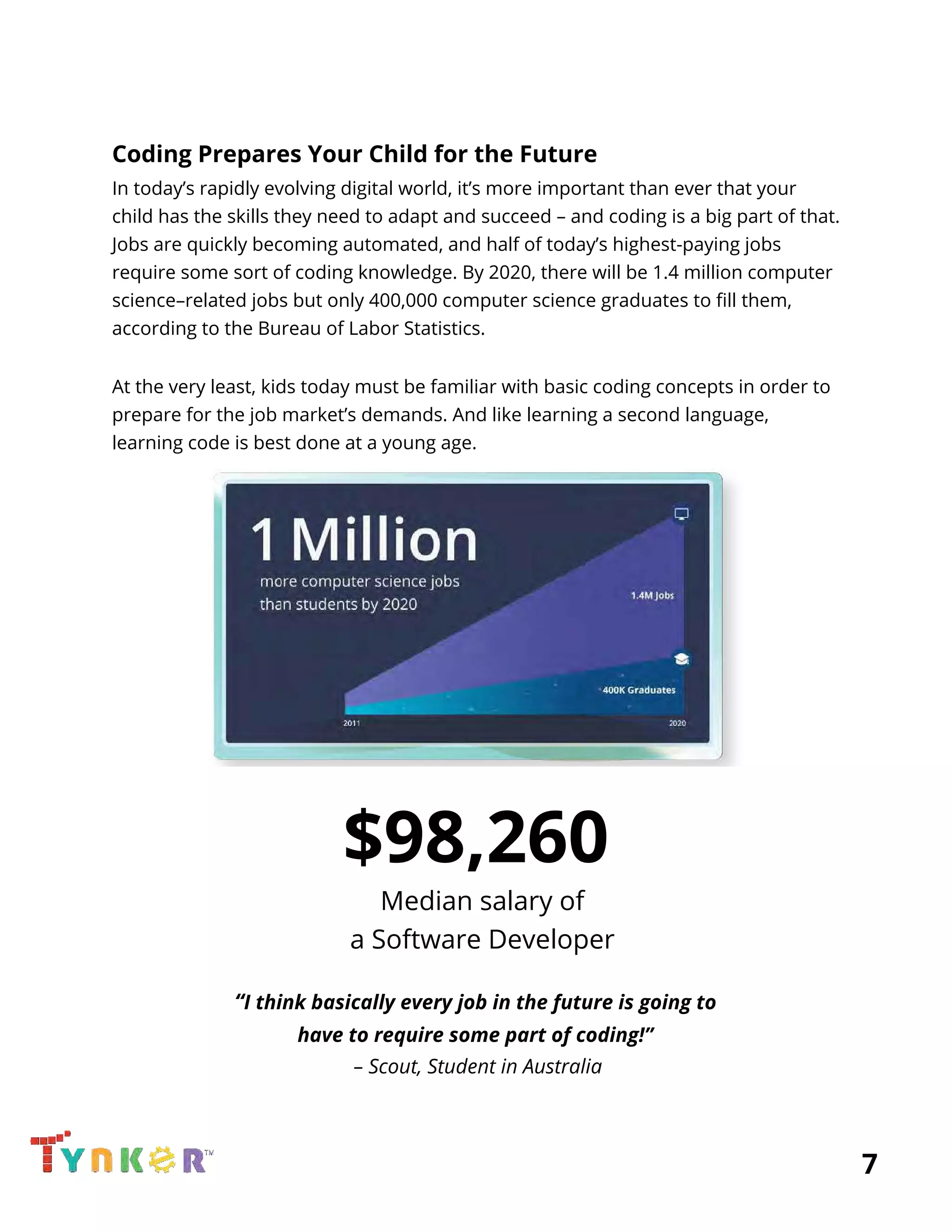
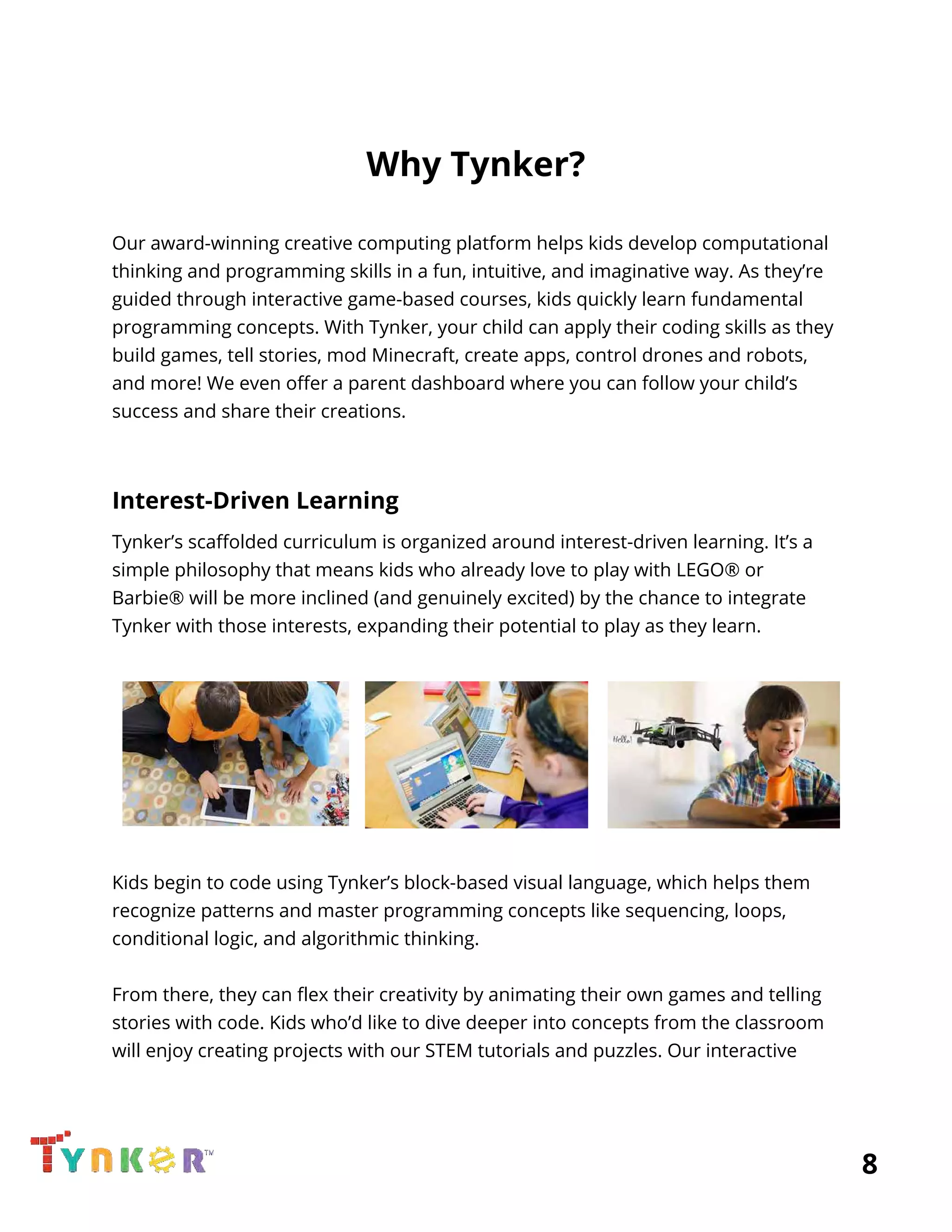
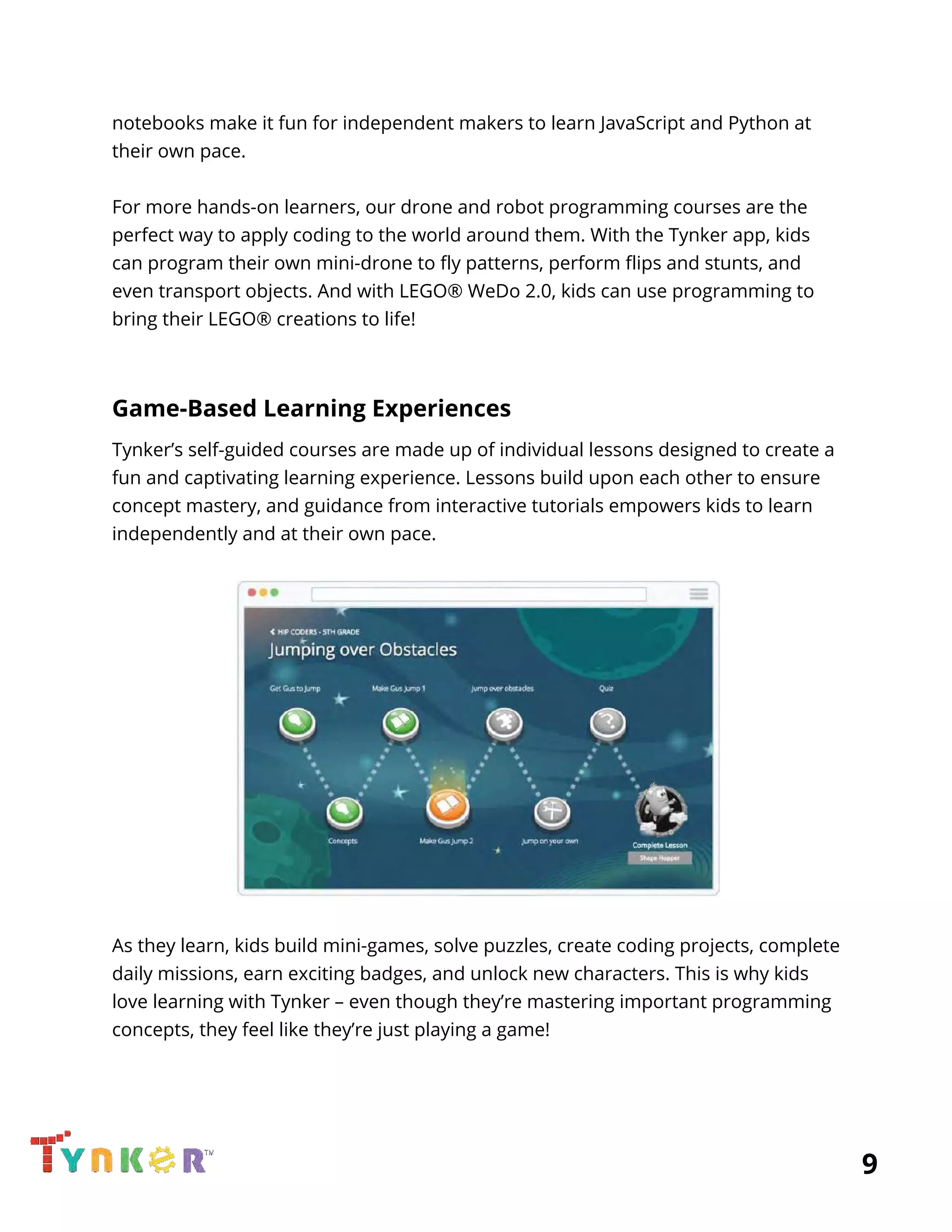
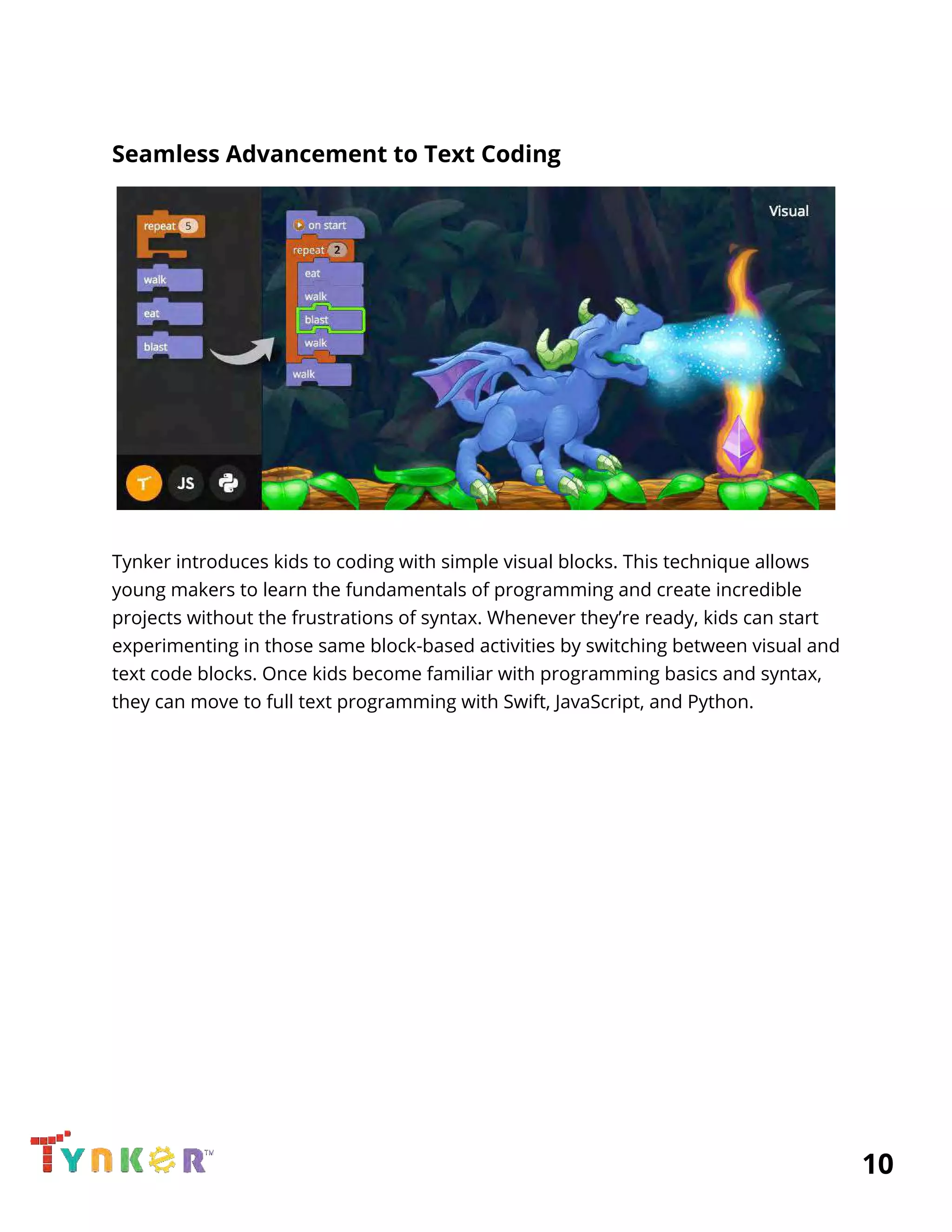

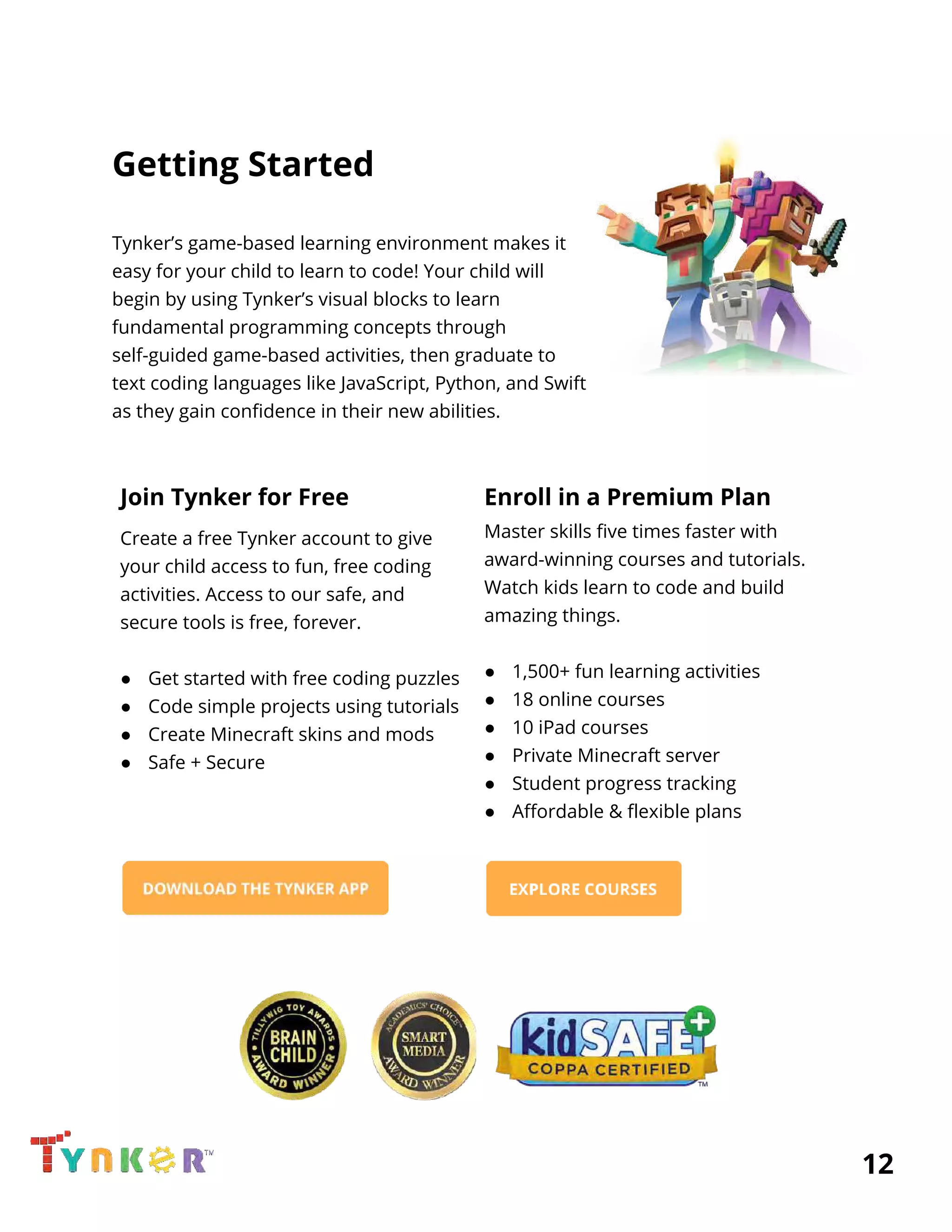
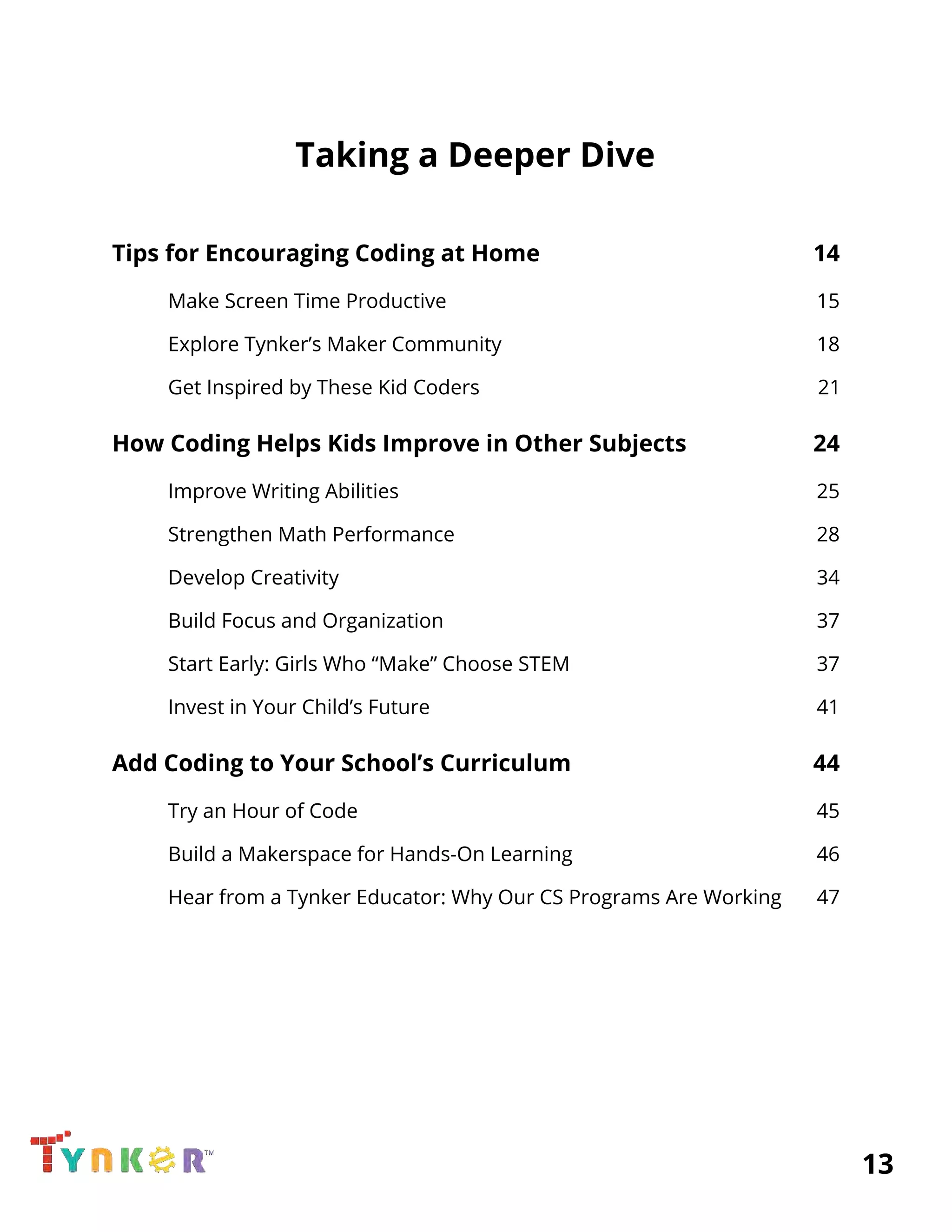
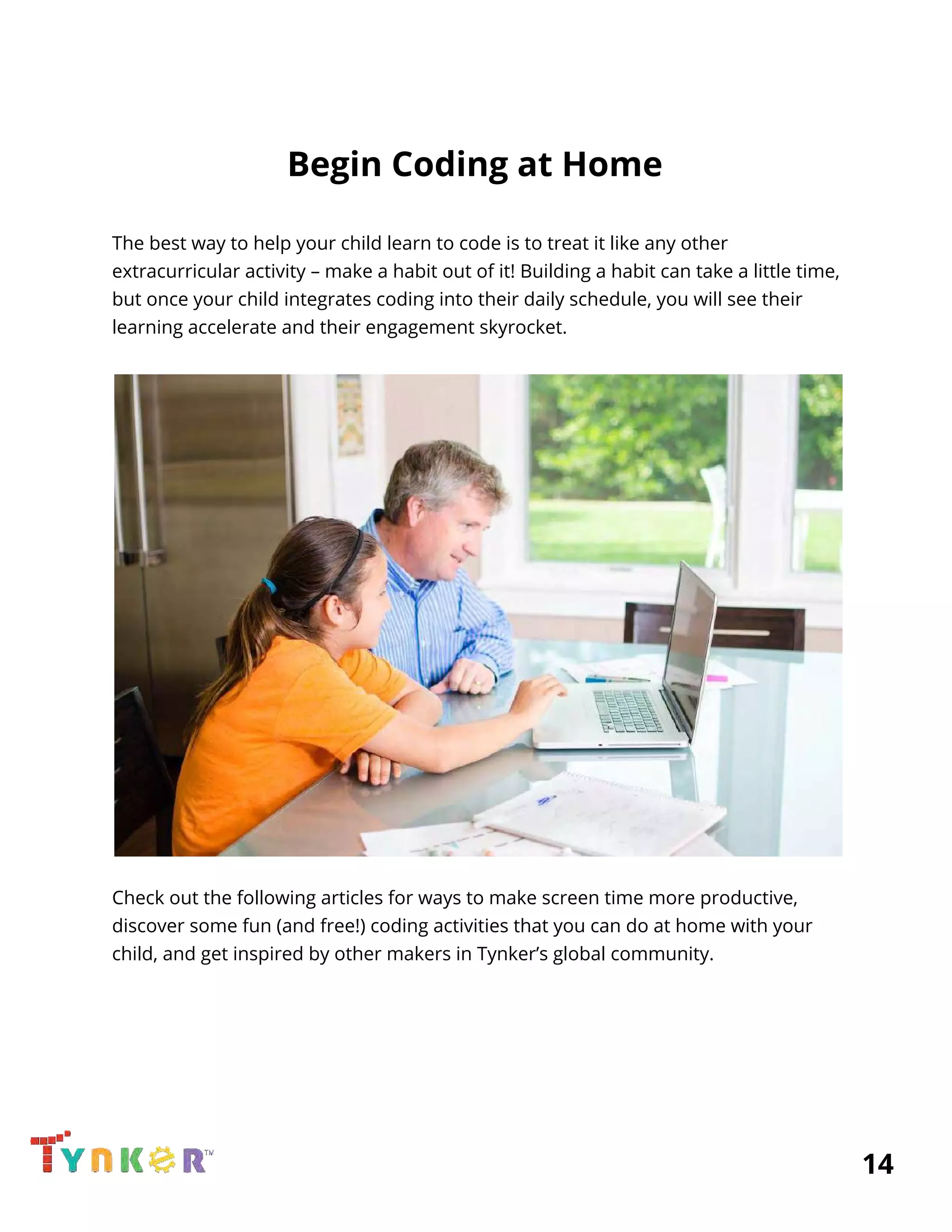
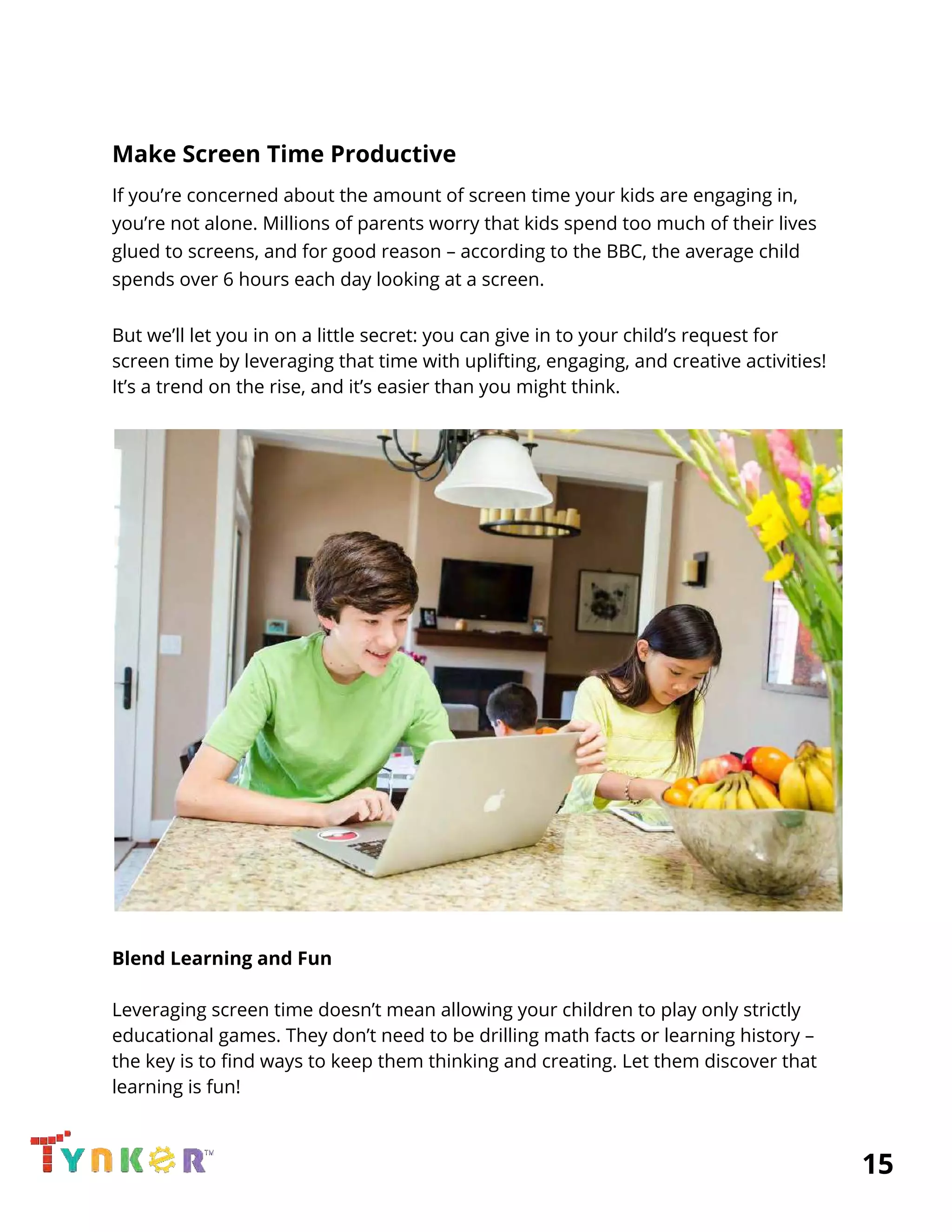
![Try swapping simple, distracting games for tablet art apps, games that involve
solving mysteries or puzzles, and coding! Encourage your kids to find inspiration in
the world around them as they make art on their tablets. When your kids look for a
game to play, help them find a game that uses problem-solving skills.
“He actually gets to use the skills that I like to see him work on, like sharing artistic talent,
music, art, as well as math.” – Lauren, Featured Maker Noah‘s mother
Try having your kids program connected toys like drones or robots. They’re hugely
popular for good reason – kids get to use screens to create, then see the physical
effects of their hard work and creativity in real-time. It’s entertaining, of course, but
it also provides a great feedback loop!
Distinguish Between Playing and Making
We all love a little bit of mindless screen time now and then – social media is to you
as gaming is to kids – but kids have an immense capability to learn and create that
needs to be explored. Creativity is one of the most important skills your children
can develop – in fact, a recent Forbes article cites creativity as the most important
skill for a future of AI!
A good rule of thumb for leveraging your child’s screen time is to find ways to focus
on “making” rather than simply “playing.” When kids are playing, they’re following
predetermined paths. When they’re making, kids pave those paths.
Here’s an example: your child is playing a game, clicking and dragging, following a
predetermined path. She’s enjoying herself and relaxing, but she’s not as engaged
as she could or should be.
When she switches to building her own game, she’s interacting with the platform in
a new way. She’s entertained by the prospect of a challenge, and pushes herself to
learn new things in order to figure out how to create what she wants to make.
“My husband especially is very anti-screen time, so he doesn’t like the kids just watching
TV – but this kind of activity is something [Max] can do where he’s actually being
productive. There’s a difference between passively just absorbing something and then
actively engaging with it.” – Stephanie, Featured Maker Max‘s mother
16](https://image.slidesharecdn.com/codingforkids-200420190206/75/Coding-for-kids-16-2048.jpg)
